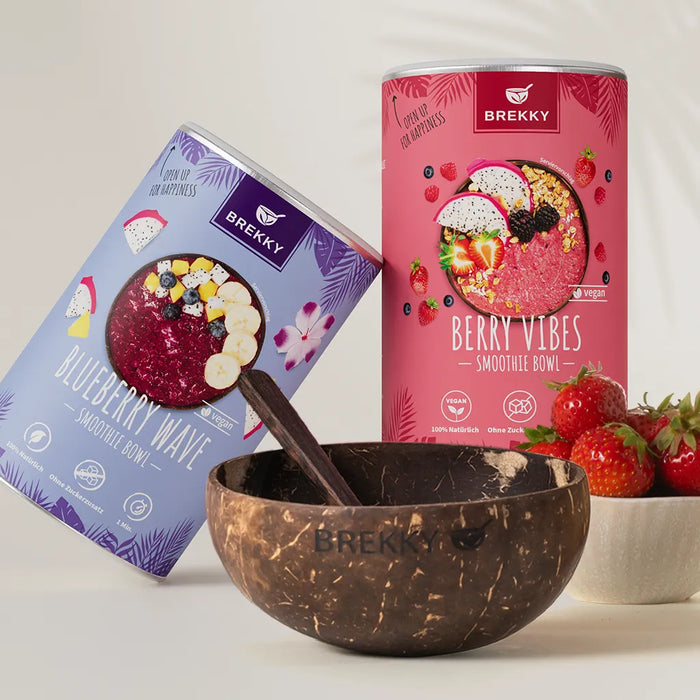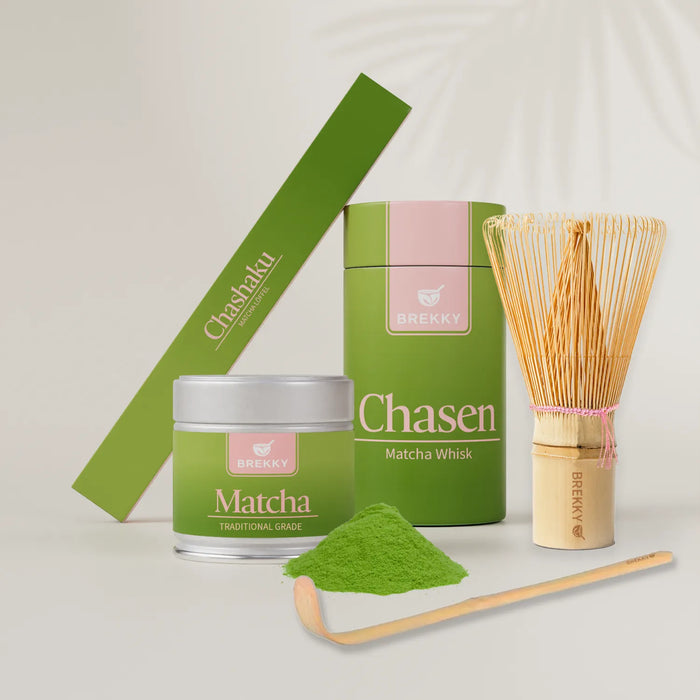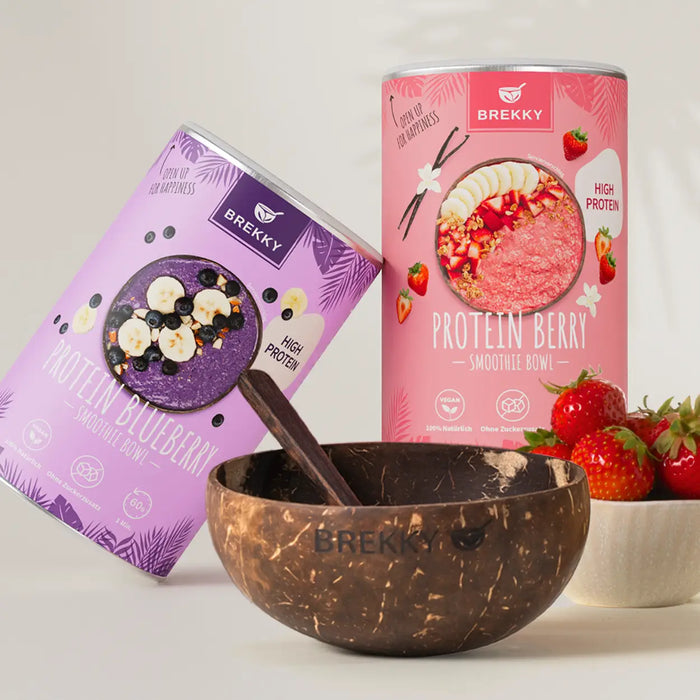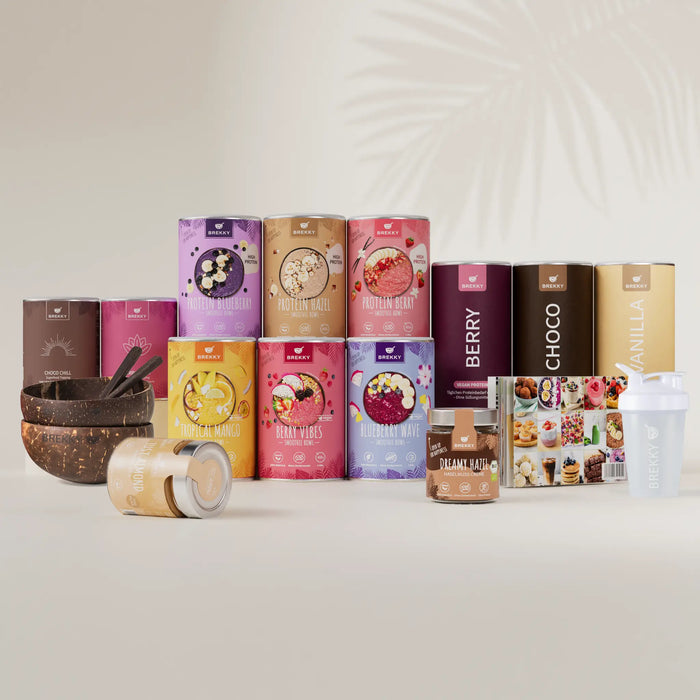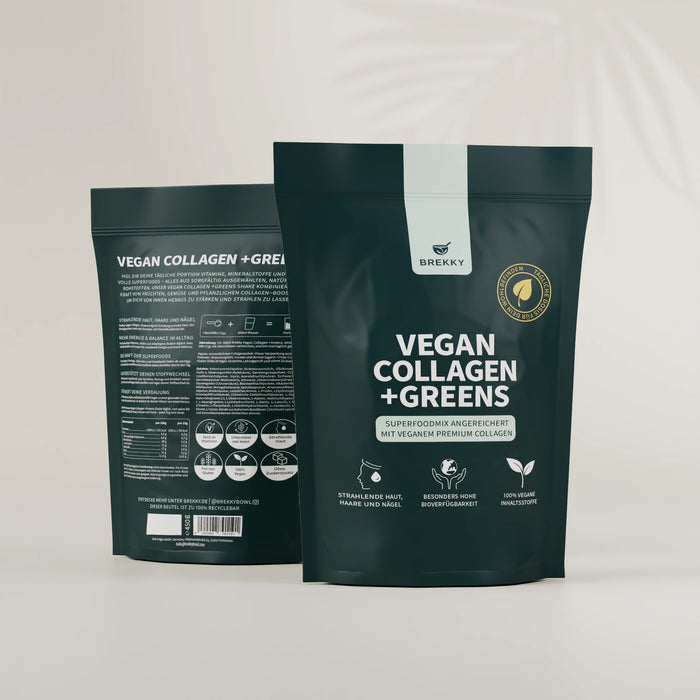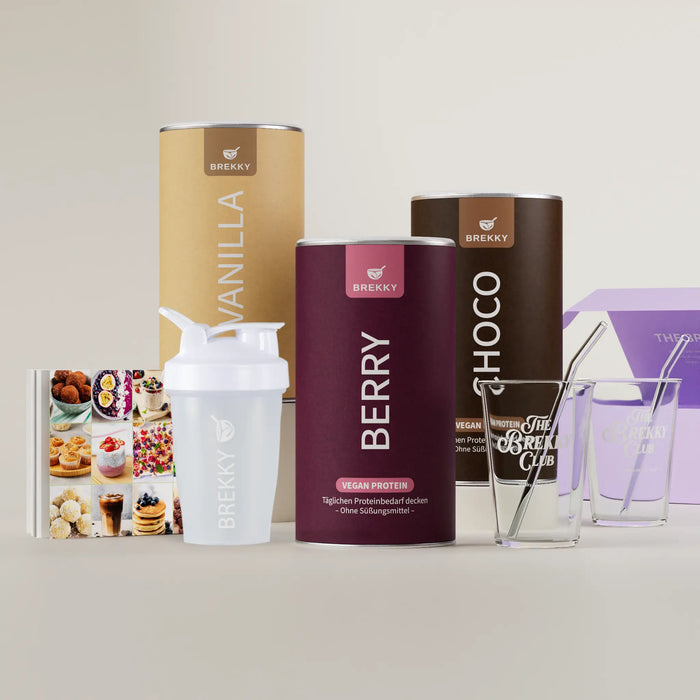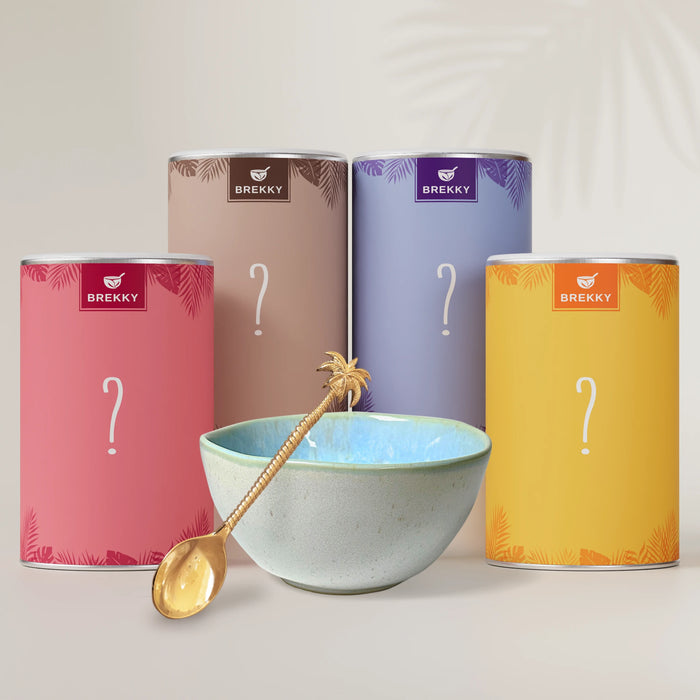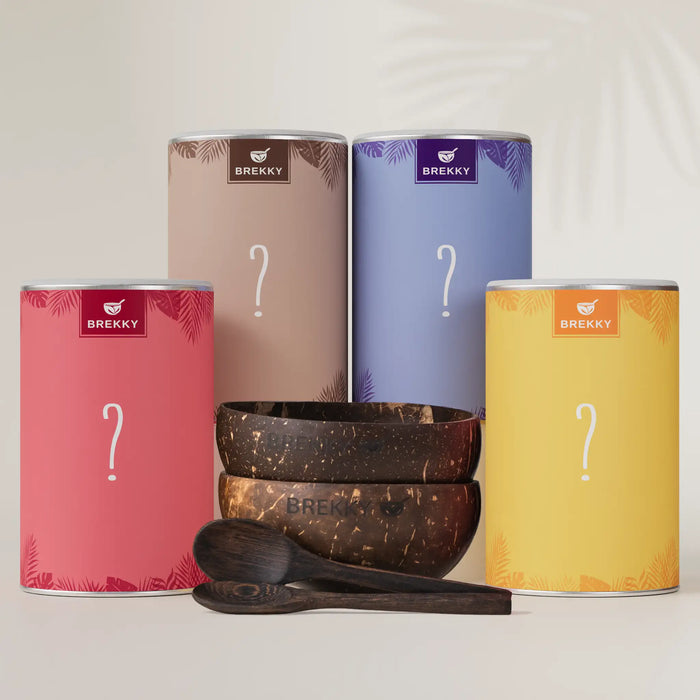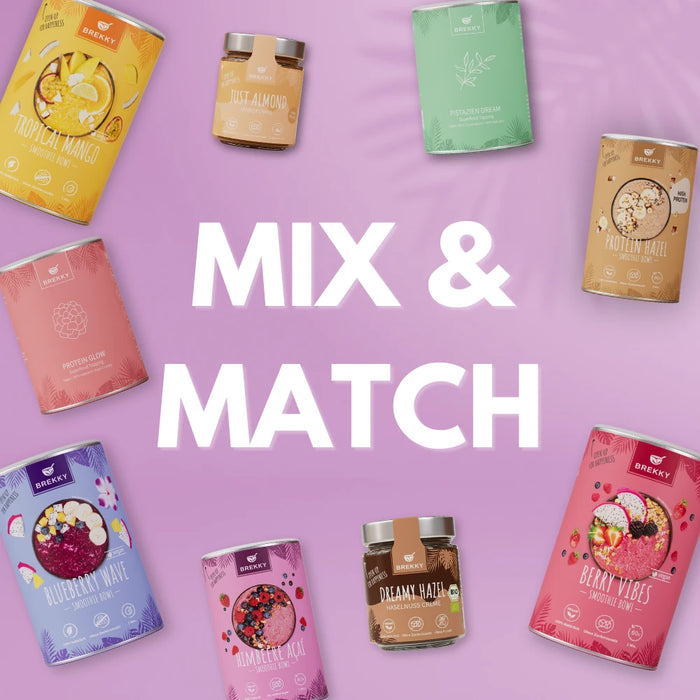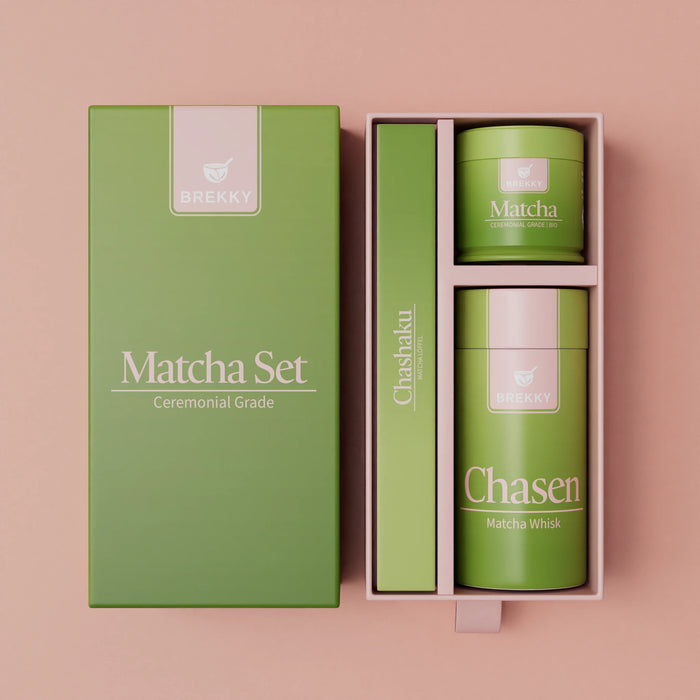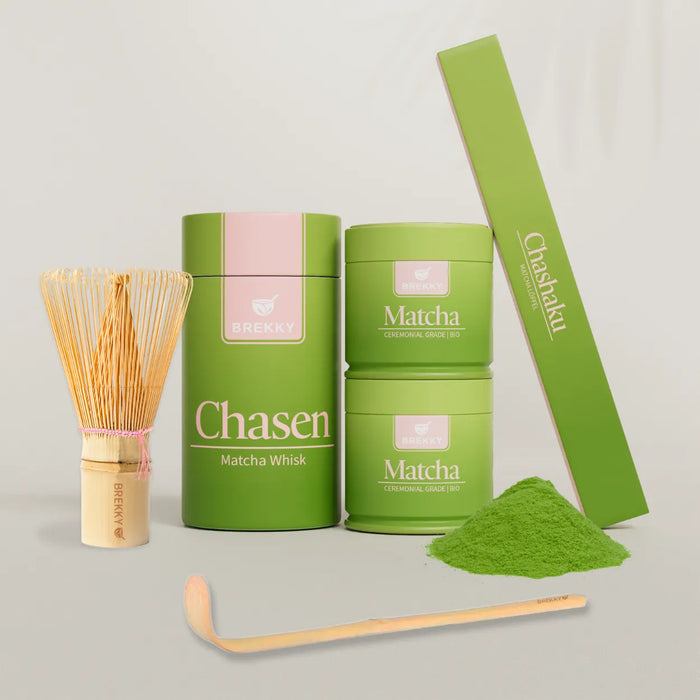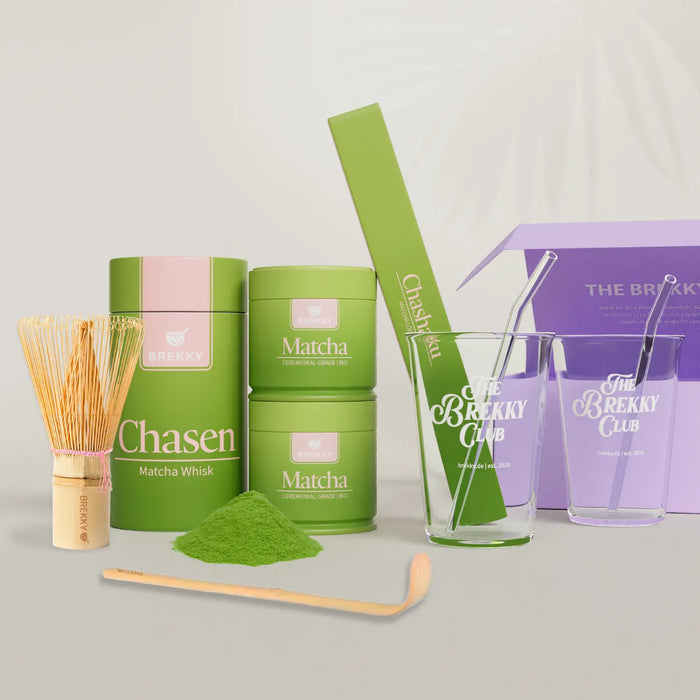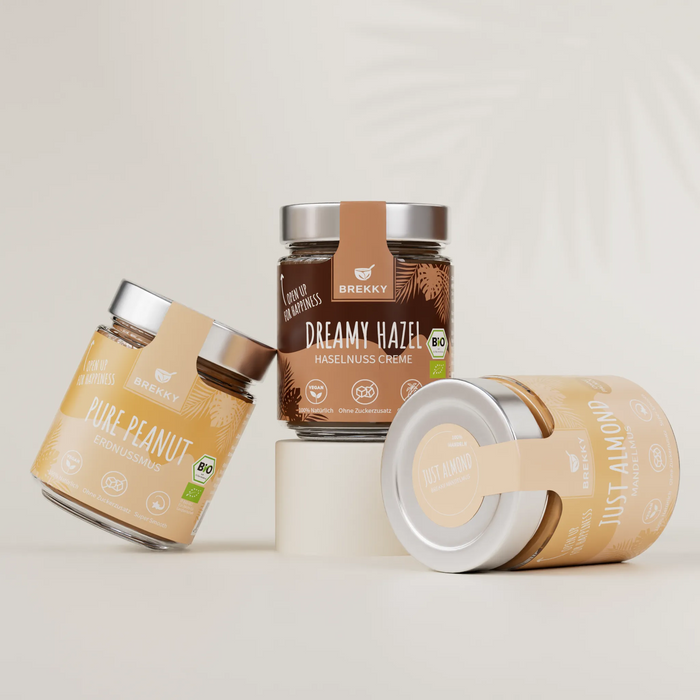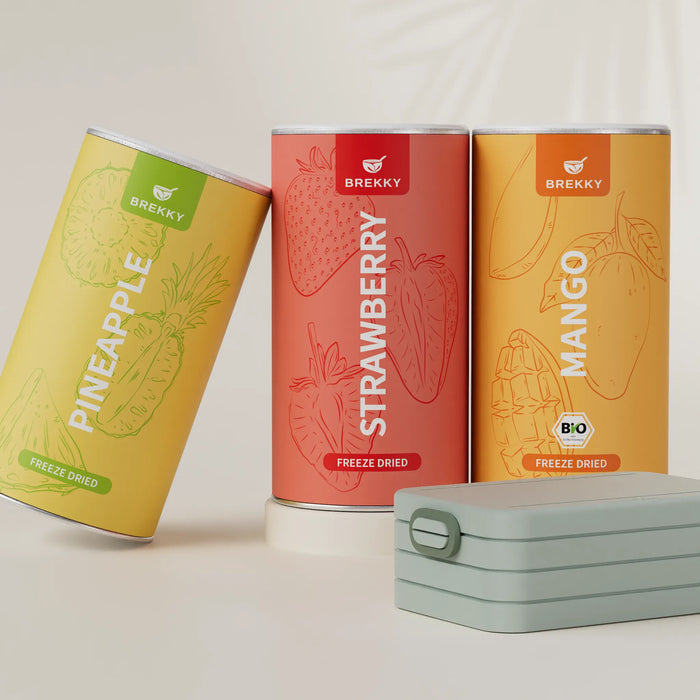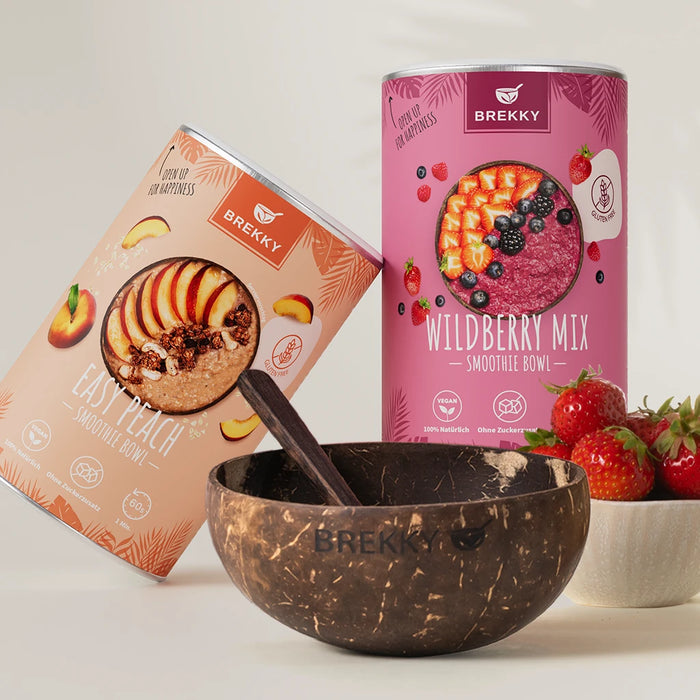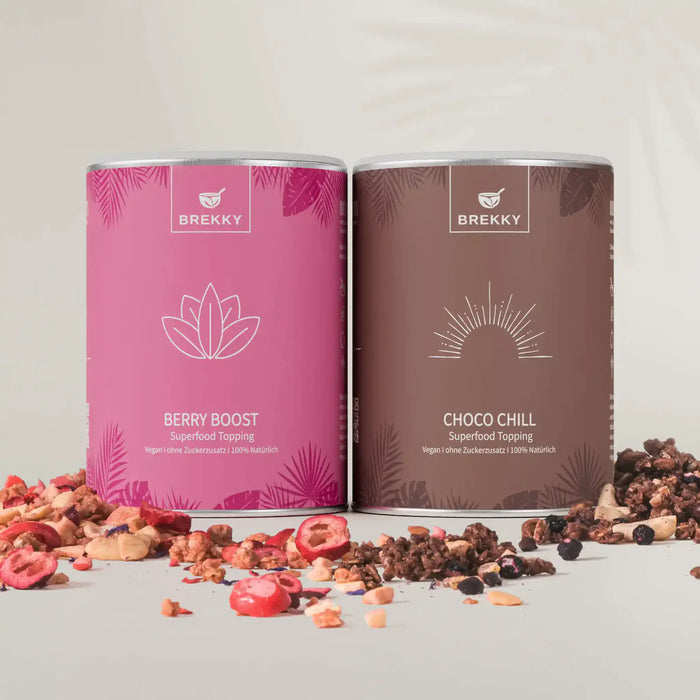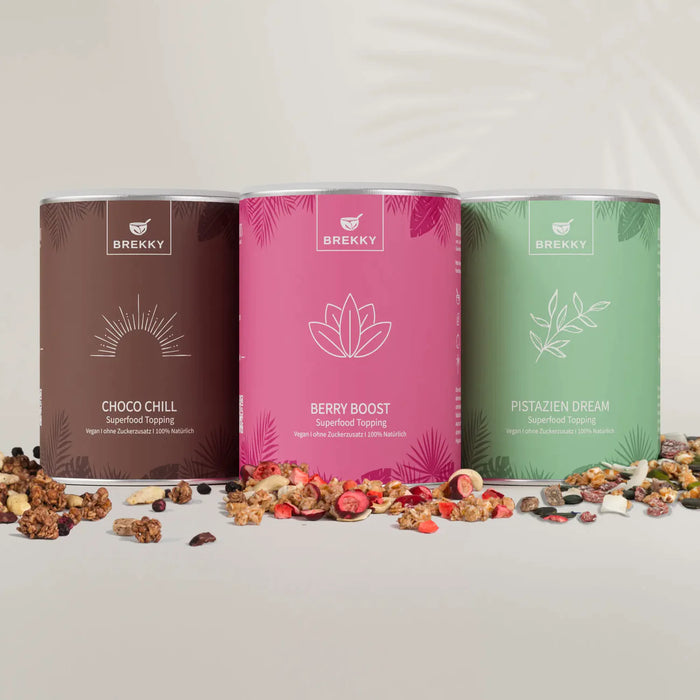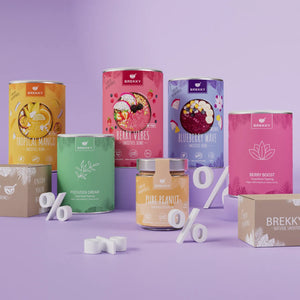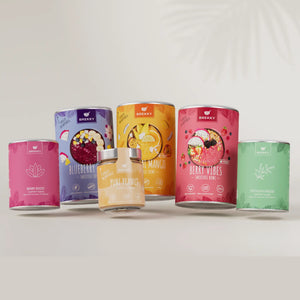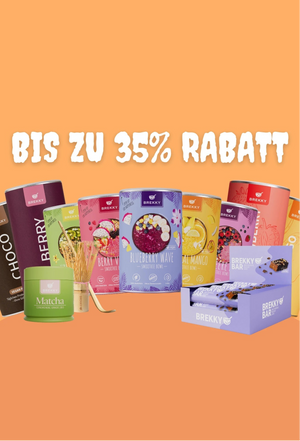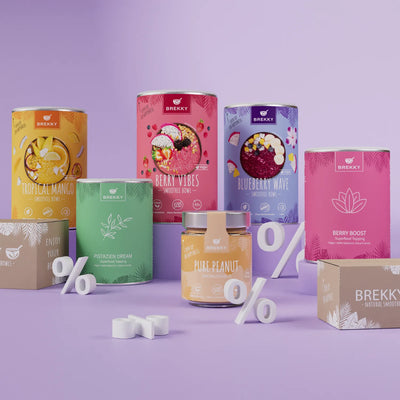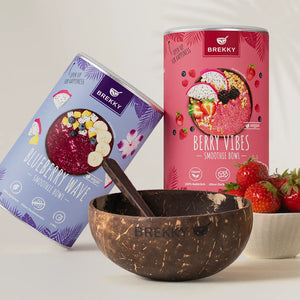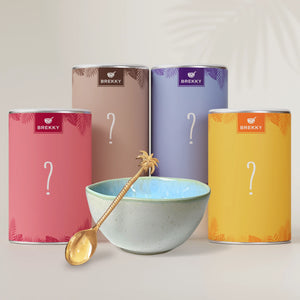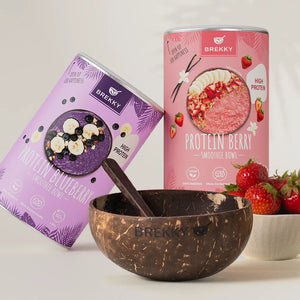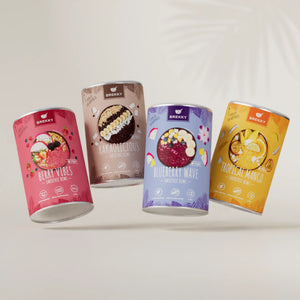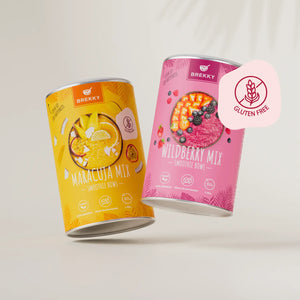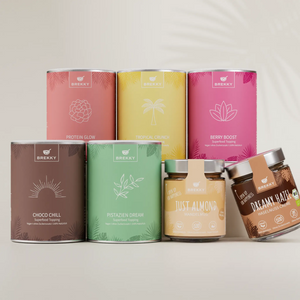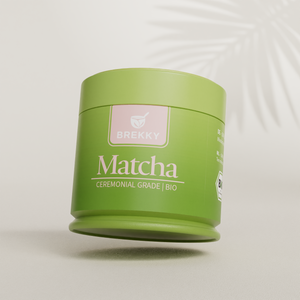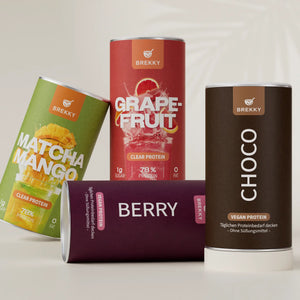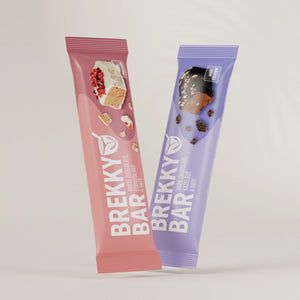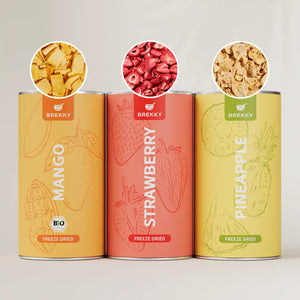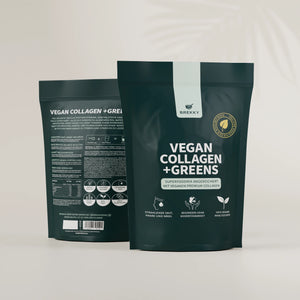Breakfast ideas for every situation: Healthy, quick, and vegan options for daycare, school, and work
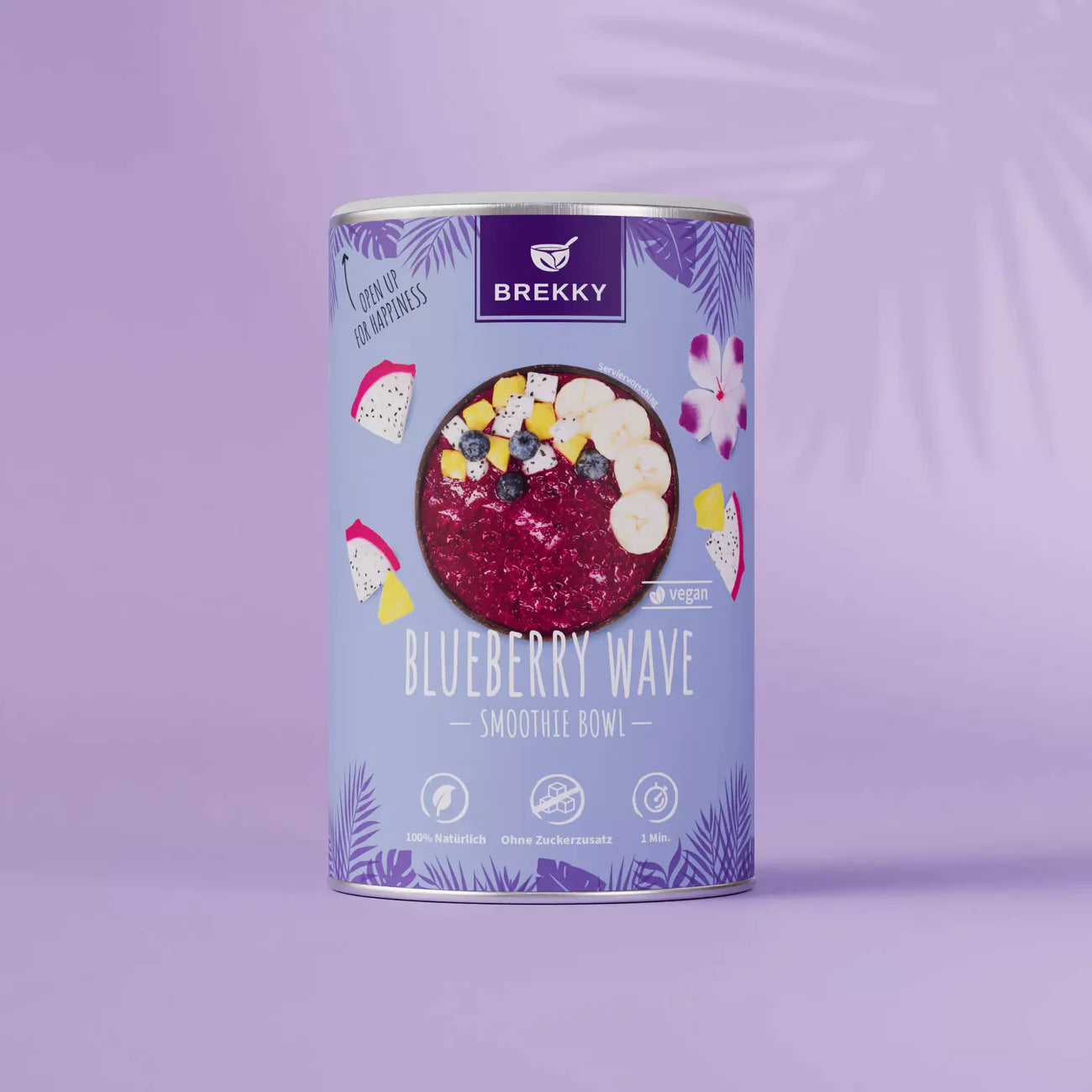
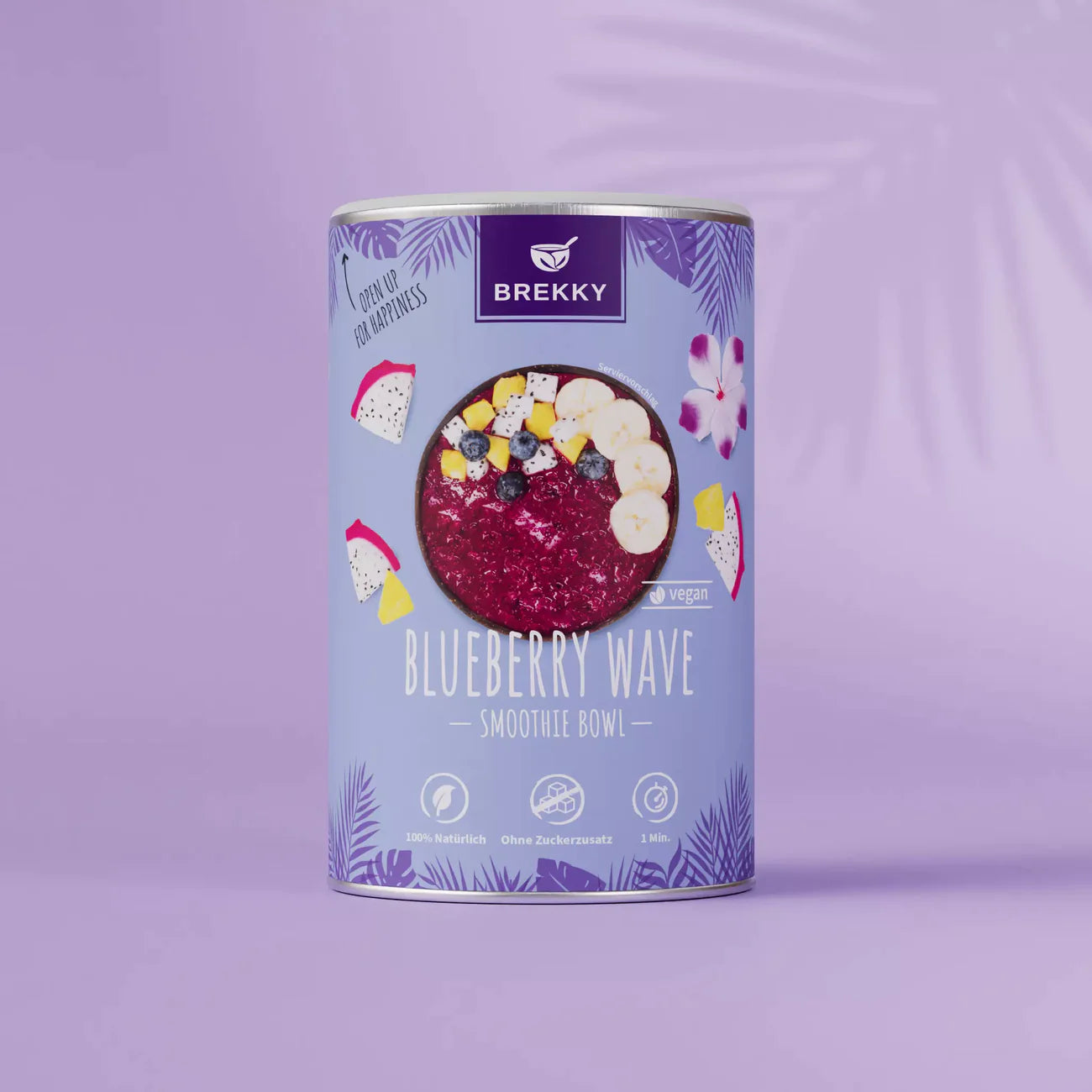
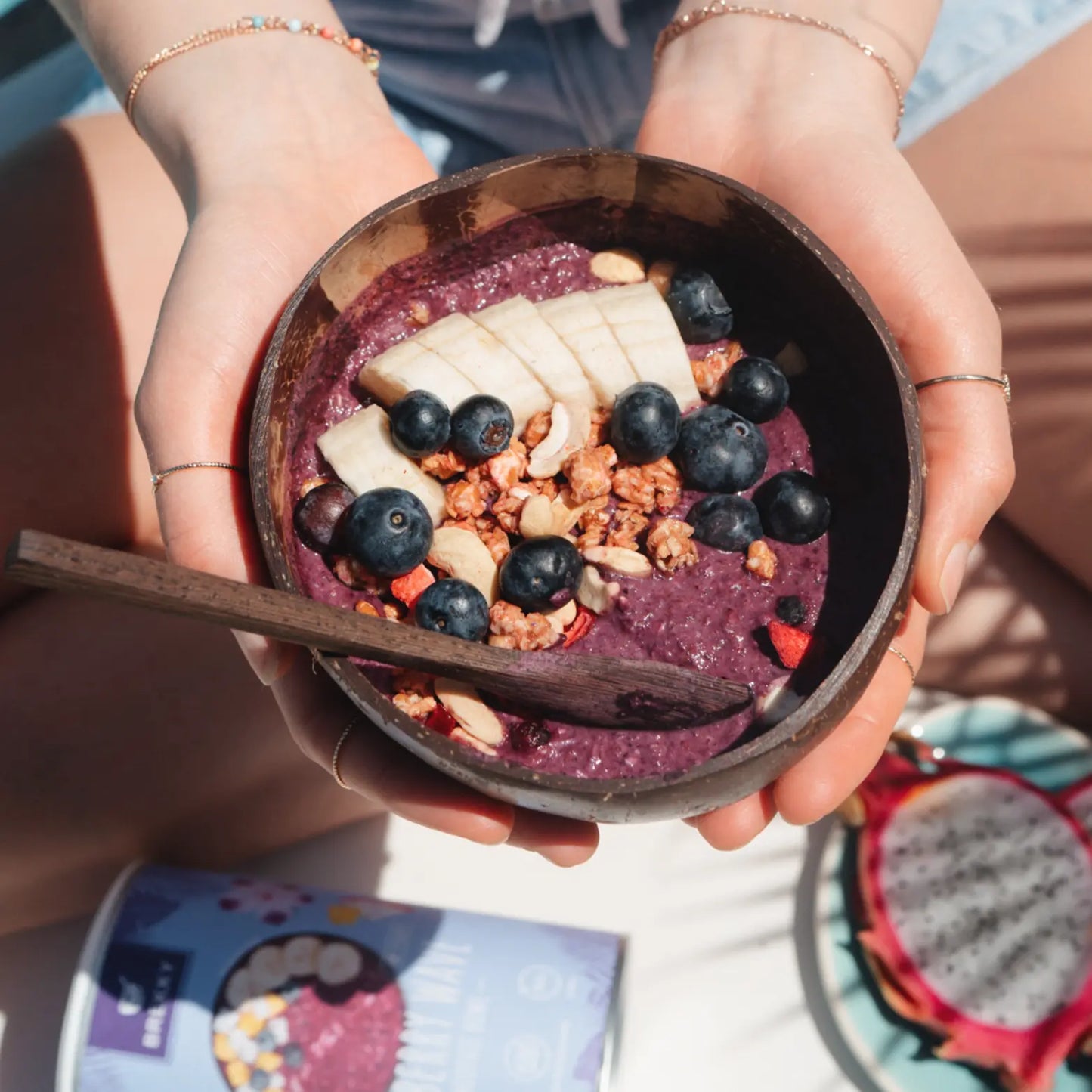
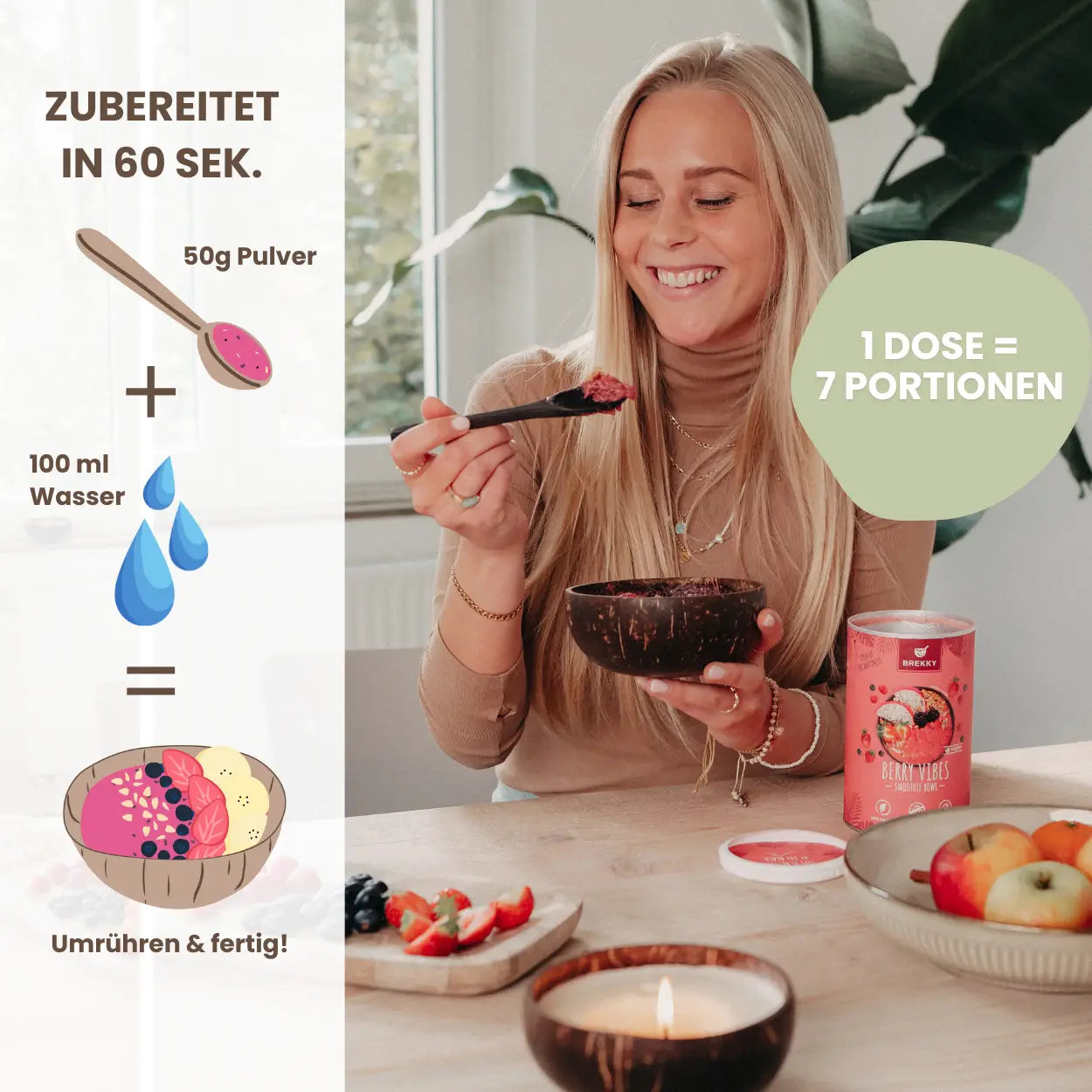
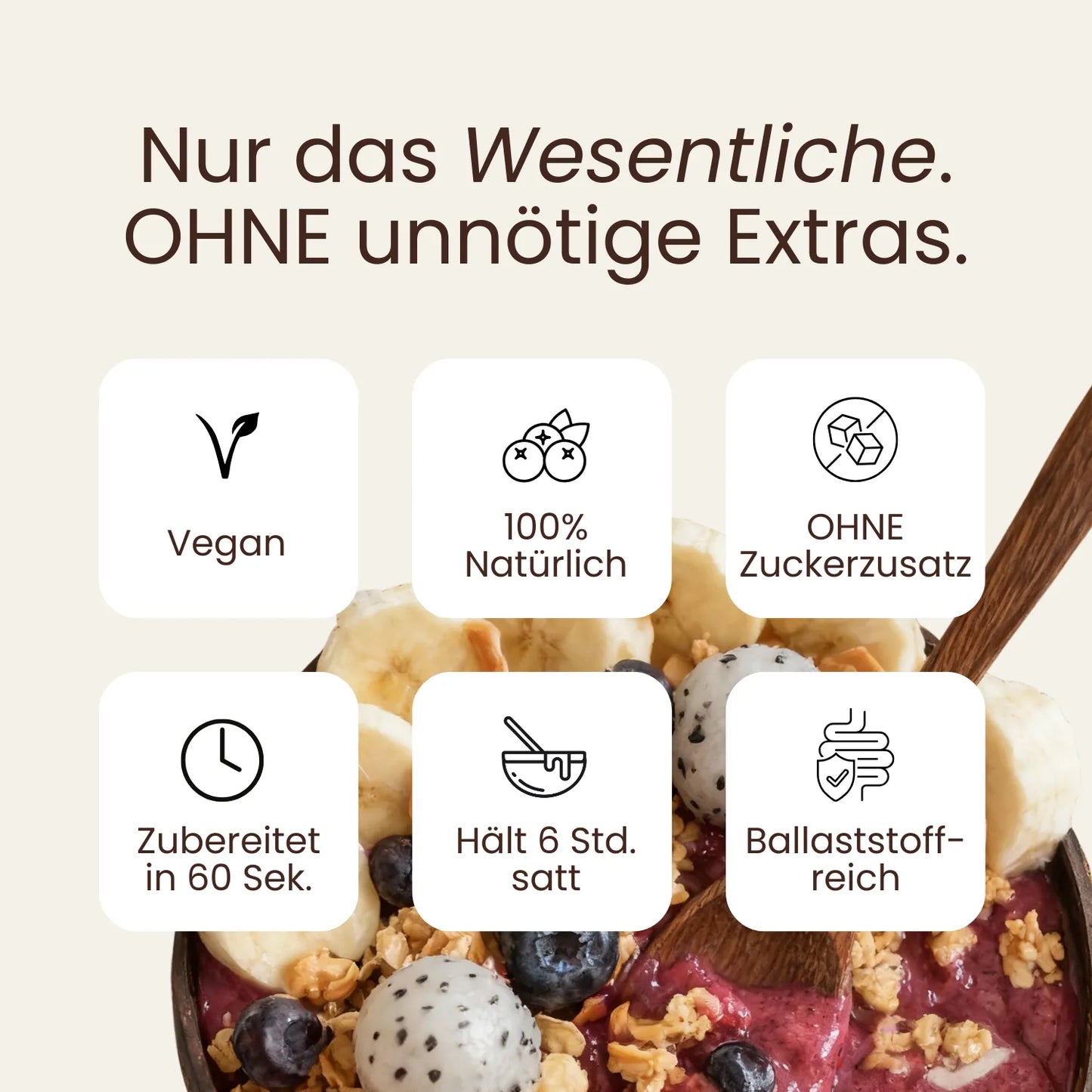
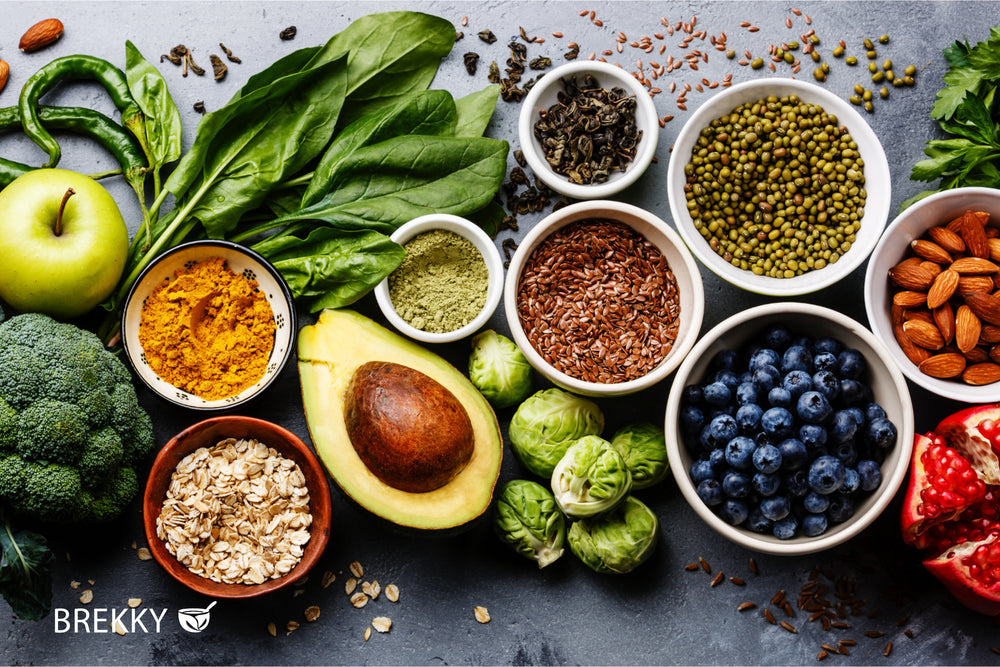
Which nutrients are important for a healthy breakfast?
An ideal breakfast consists of a mix of macronutrients (carbohydrates, proteins, fats) and micronutrients (vitamins, minerals, phytochemicals). Here's a brief overview:
- Carbohydrates : They provide quick energy. Complex carbohydrates from whole-grain products such as oatmeal, whole-grain bread, or whole-grain cereals are particularly important. These keep you fuller for longer and provide the body with consistent energy.
- Proteins : Proteins are essential for building and maintaining muscles, cells, and enzymes. Good sources of protein in the morning include yogurt, cottage cheese, eggs, legumes, tofu, and nuts.
- Fats : High-quality fats are important for hormone production, cell development, and energy. Healthy fats can be found in nuts, seeds, avocados, and vegetable oils like olive oil.
- Vitamins and minerals : Fruits, vegetables and whole grain products provide plenty of vitamins (e.g. vitamin C, B vitamins) and minerals (e.g. calcium, iron, magnesium).
In the following chapters, we will explore different breakfast ideas for different everyday situations and show you how to easily create healthy routines.
Contents
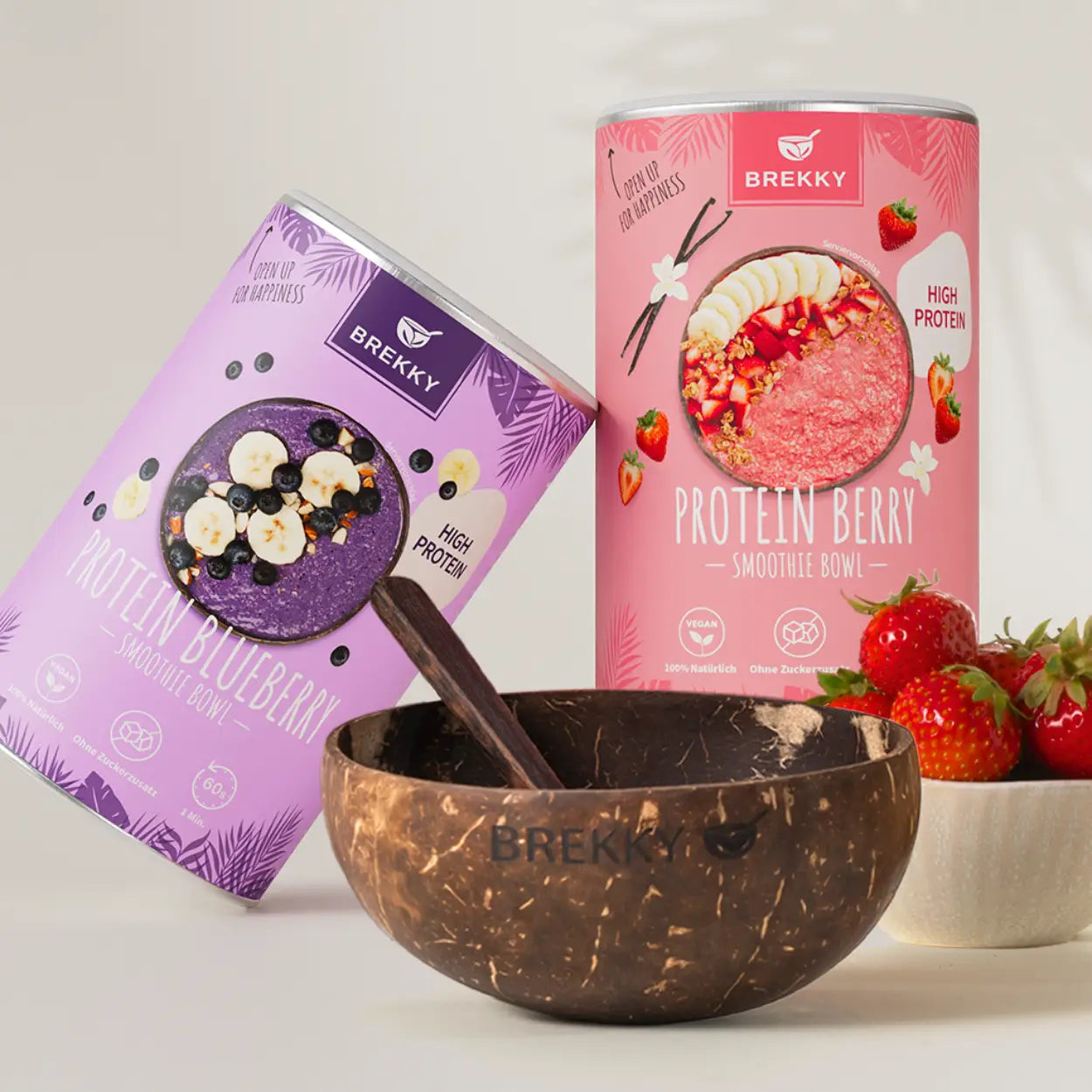
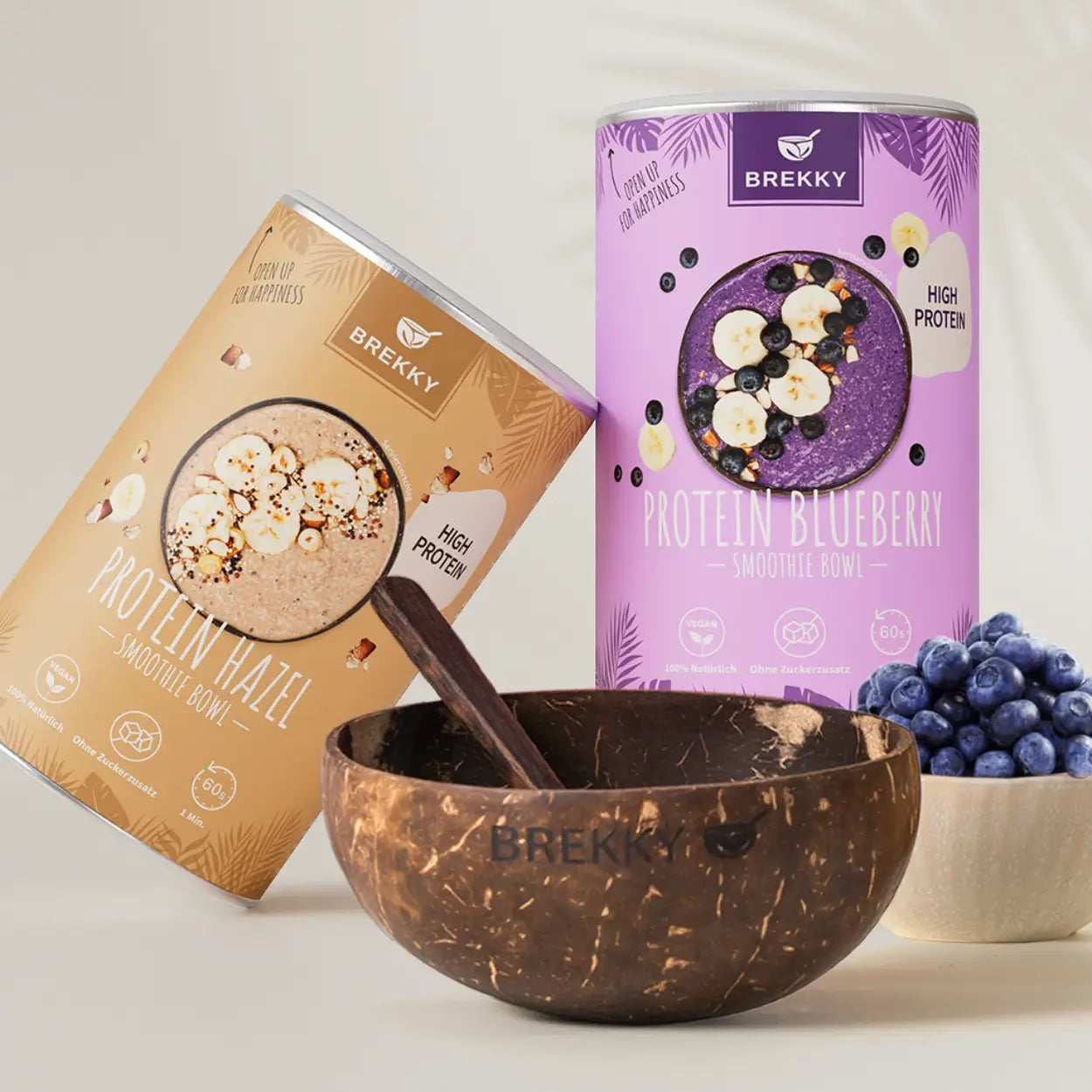
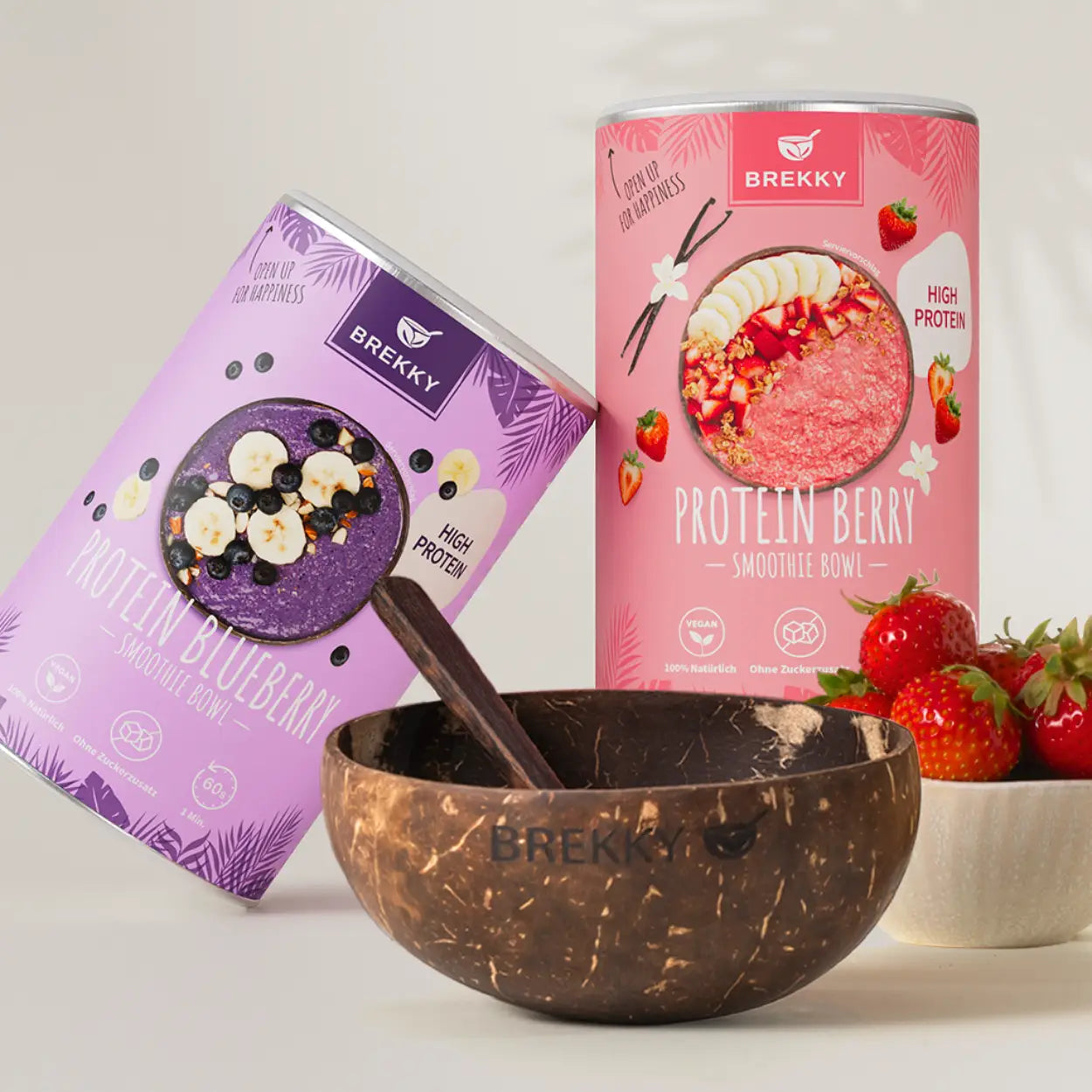
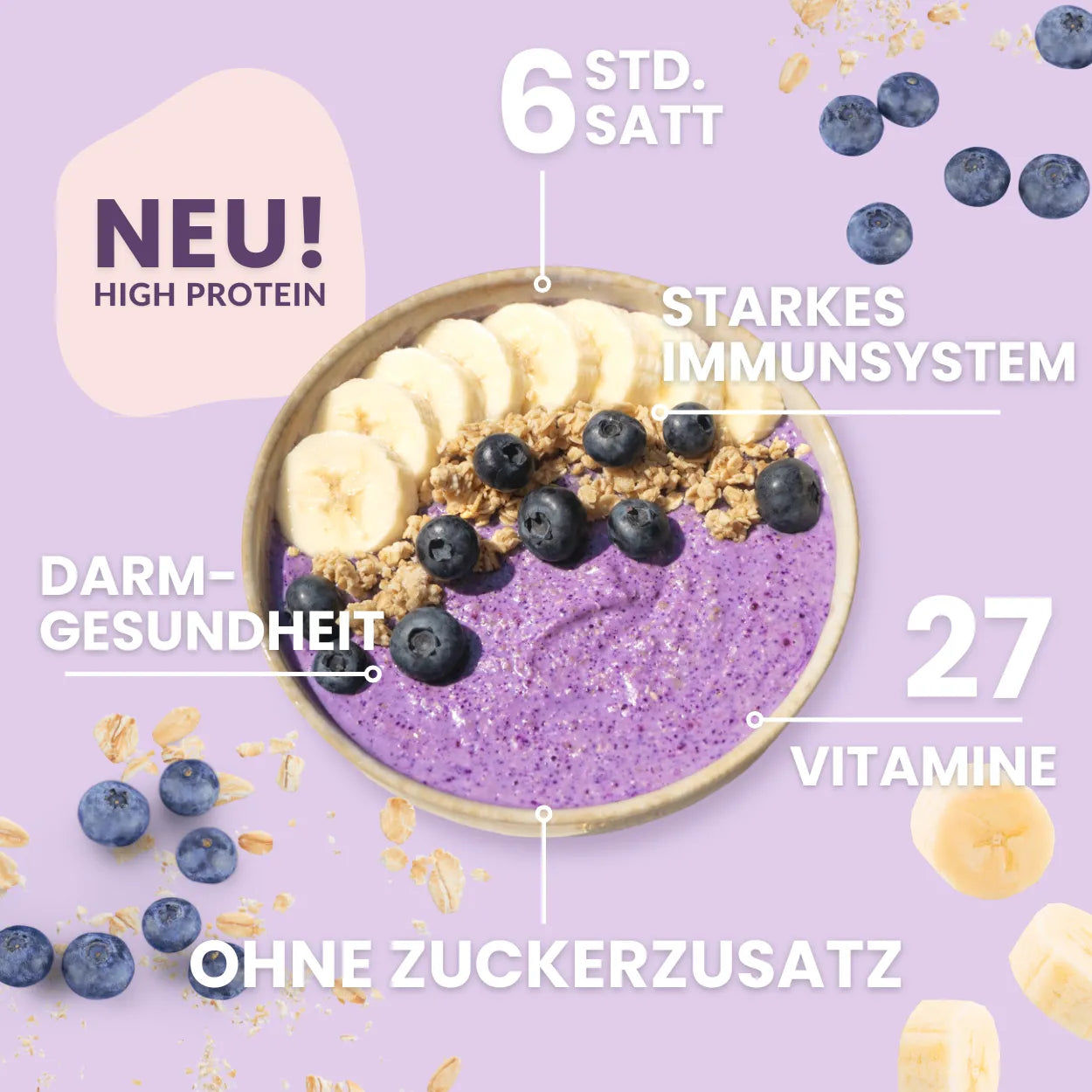
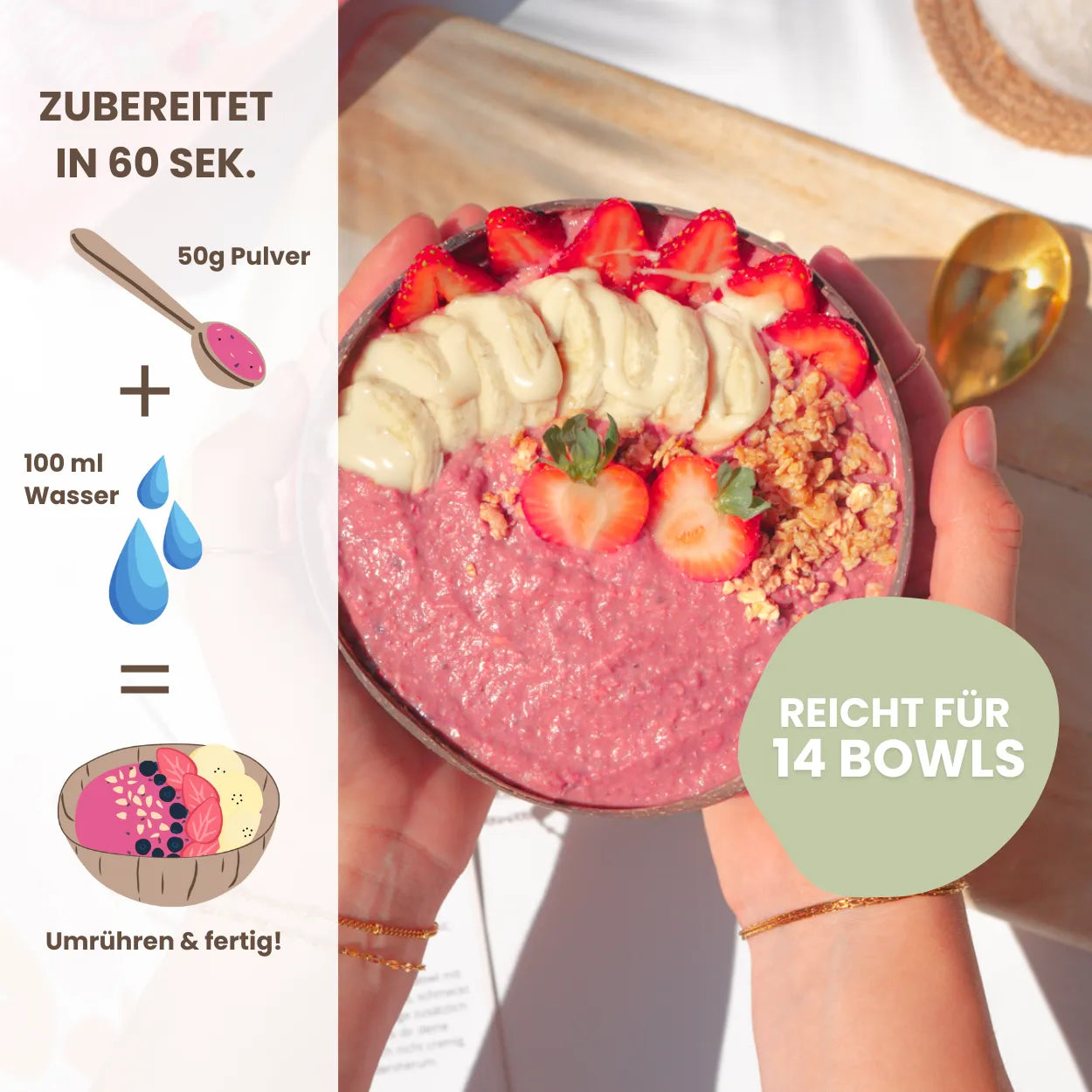
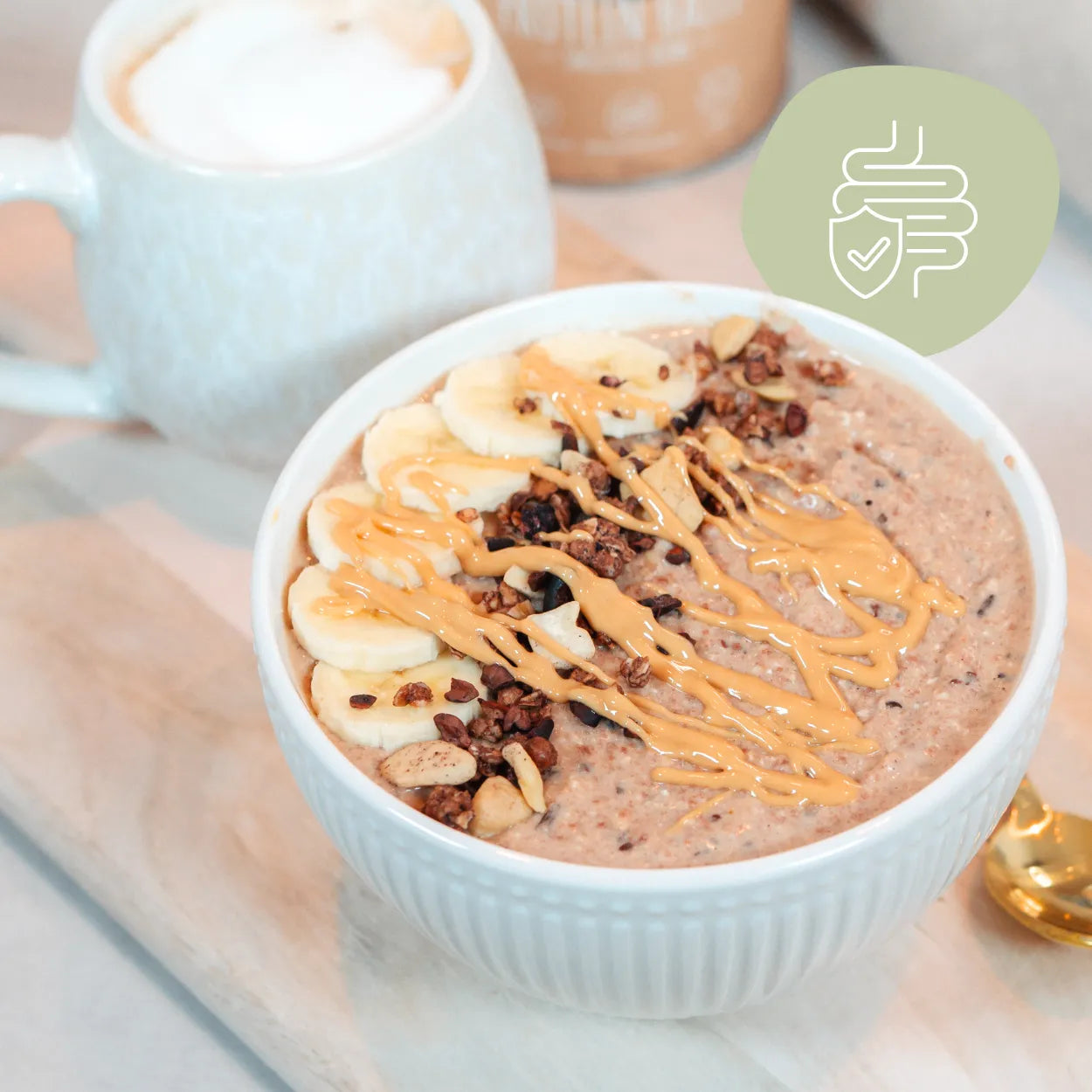


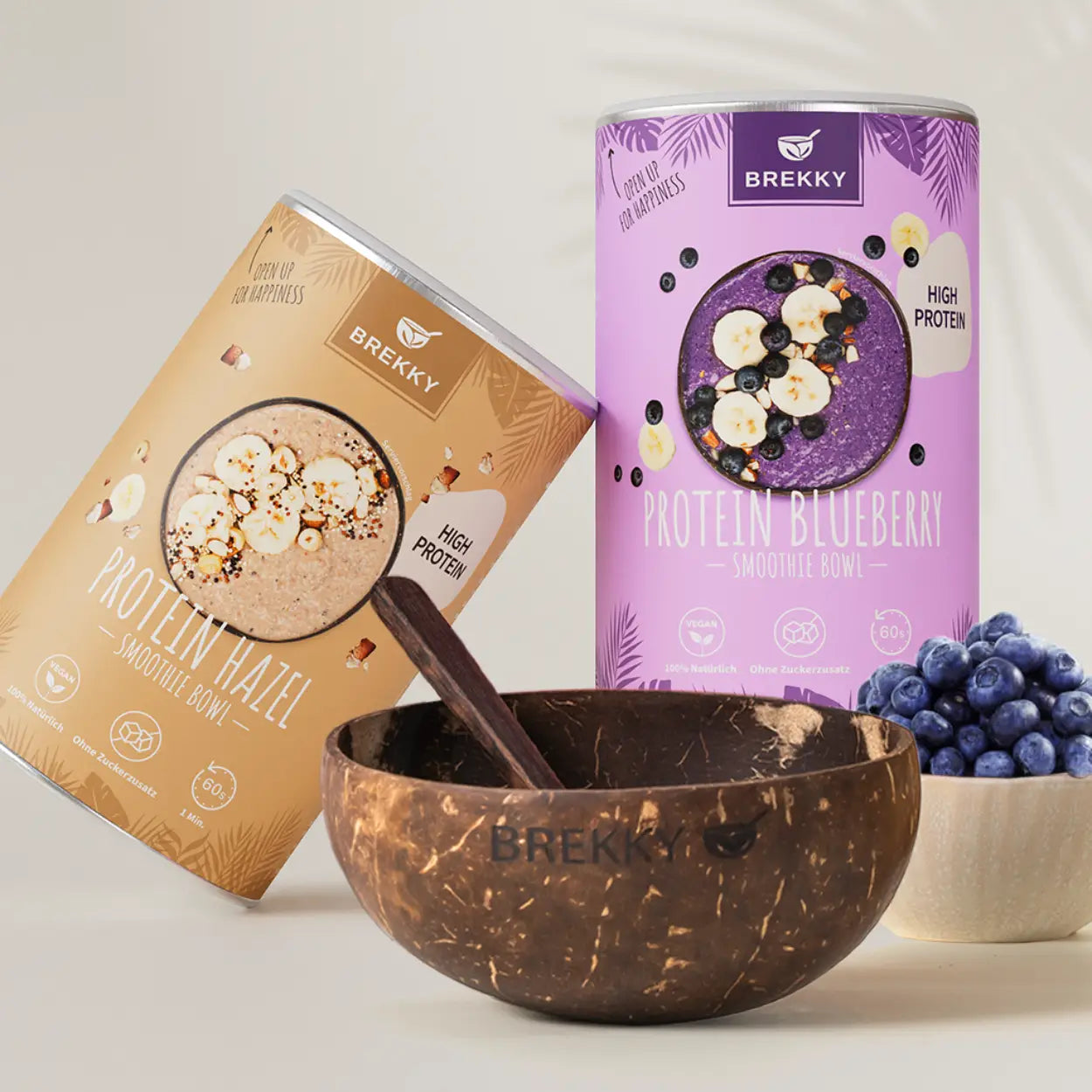
Breakfast ideas for different everyday situations

Breakfast ideas for work
Why breakfast is so important in the workplace
At work, we often have to concentrate on our work: meetings, computer work, or physical activities require energy. A good breakfast not only provides fuel but can also reduce stress levels because we feel better prepared.
Practical tips for a working breakfast
- Meal prep principle : Preparing a portion of porridge or overnight oats in the fridge the night before can save time in the morning. Mix oatmeal, chia seeds, flax seeds, and milk or plant-based alternatives (e.g., oat milk), let it soak overnight, and top with fruit in the morning.
- Sandwiches & Wraps : A whole-grain sandwich with fresh vegetables, hummus, or lean cold cuts fits easily into a breakfast box. Wraps are equally convenient and can be filled with whatever you like (e.g., salad, roasted vegetables, refried beans).
- Snack options : If you just need a quick bite between meals, you can reach for nuts, dried fruit, vegetable sticks, or hard-boiled eggs. These are quick to eat and provide the body with protein and fiber.
Time savings and healthy routines
Especially for working professionals, it's a good idea to establish routines. A set day of the week dedicated to planning the upcoming workday (e.g., preparing snacks, portioning oatmeal) provides relief. This makes it easy to implement "quick breakfast ideas" without feeling rushed.

Breakfast ideas for children (daycare & kindergarten)
A child-friendly start to the day
Children need energy for growth, learning, playing, and romping. Especially in daycare or kindergarten, breakfast is often the first meal shared together. Daycare breakfast ideas and kindergarten breakfast ideas should, above all, be child-friendly, varied, and easily digestible.
Example ideas for a daycare or kindergarten breakfast
- Colorful bread skewers : Cut whole-grain bread into bite-sized pieces and skewer them with cheese cubes, cucumber slices, bell pepper pieces, and some fruit (e.g., grapes). This looks fun and adds variety.
- Crunchy muesli with yogurt : A mild muesli made from oat flakes or spelt pops, mixed with fresh fruit or a little honey (for children over 1 year old) makes for a sweet, but not too sweet, breakfast.
- Breakfast muffins : Homemade muffins made with whole-wheat flour, eggs, grated vegetables (e.g., carrots, zucchini), and cheese are delicious hot or cold, transforming a simple baked good into a hearty snack.
What should you look for when thinking about daycare breakfast ideas?
- Sufficient fluids : Water or unsweetened tea is suitable.
- No excess sugar : Limit sweets as much as possible so that children get to know the natural taste of food.
Vary your ingredients : Vary your vegetables, fruits, whole grains, and proteins to provide a variety of nutrients.
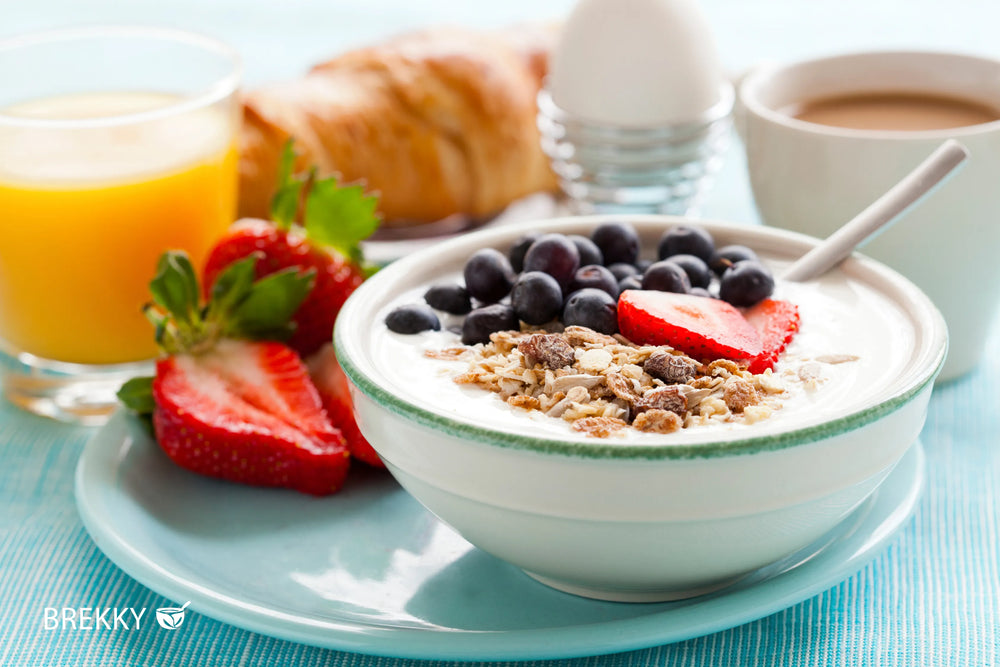
Breakfast ideas for school
More power for schoolchildren
School requires concentration: reading, writing, arithmetic, and memorization – the brain needs a constant supply of energy for this. A balanced school breakfast or snack should be easy to digest and satisfying at the same time.
Practical breakfast ideas for school
- Whole-grain bread with toppings : For example, lean ham, cheese, hummus, quark with herbs, or avocado. Variations with lettuce leaves, cucumber slices, and pepper strips spice up the bread.
- Vegetable and fruit portions : Apple slices, banana pieces, tomatoes and carrot sticks can be transported in small boxes in a space-saving manner.
- Yogurt with flakes : Small cups of yogurt (plain or mild) combined with oat or spelt flakes are also suitable for school-age children. Those who prefer a sweeter snack can add some pureed fruit.
Tips for parents
- Evening preparation : Pack your lunchbox ahead of time. This will save you from a hectic morning.
- Choose together : Children are much more motivated to eat their lunch when they have a hand in choosing it. Ask them about their favorite ingredients and explain why healthy ingredients are important.
- Child-friendly portions : Too much food in a can can be overwhelming and sometimes ends up back home untouched. Better: smaller portions, but with more variety.
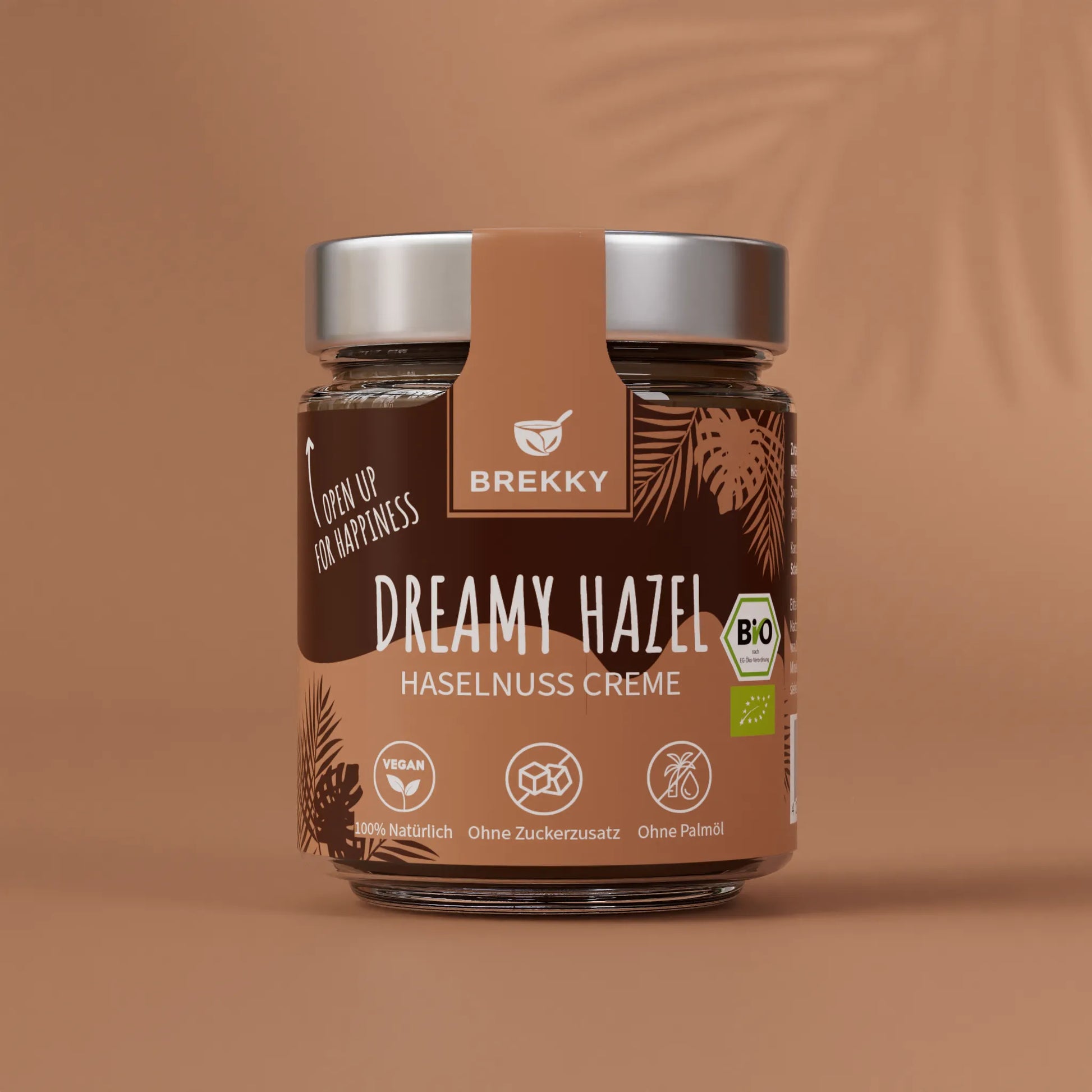
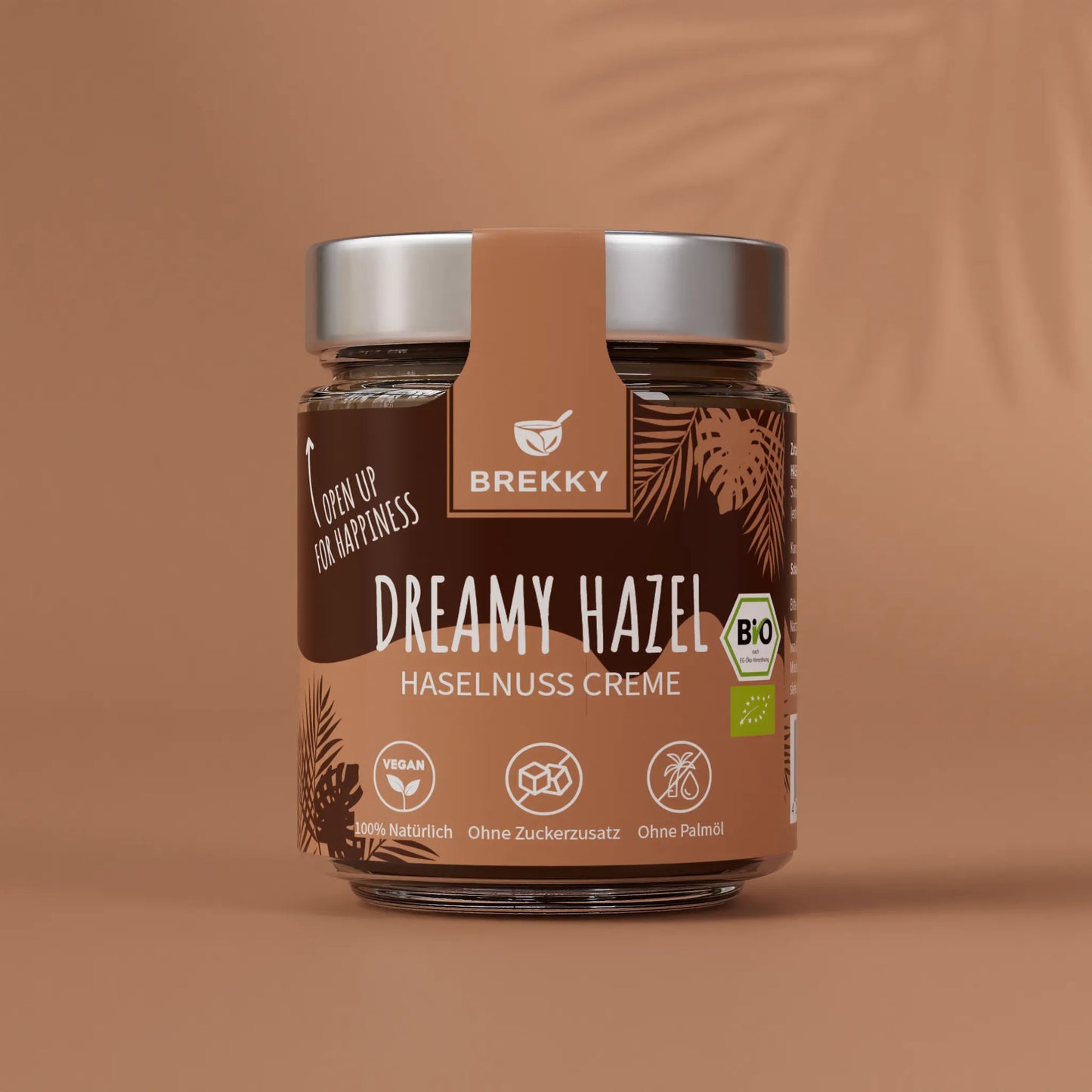
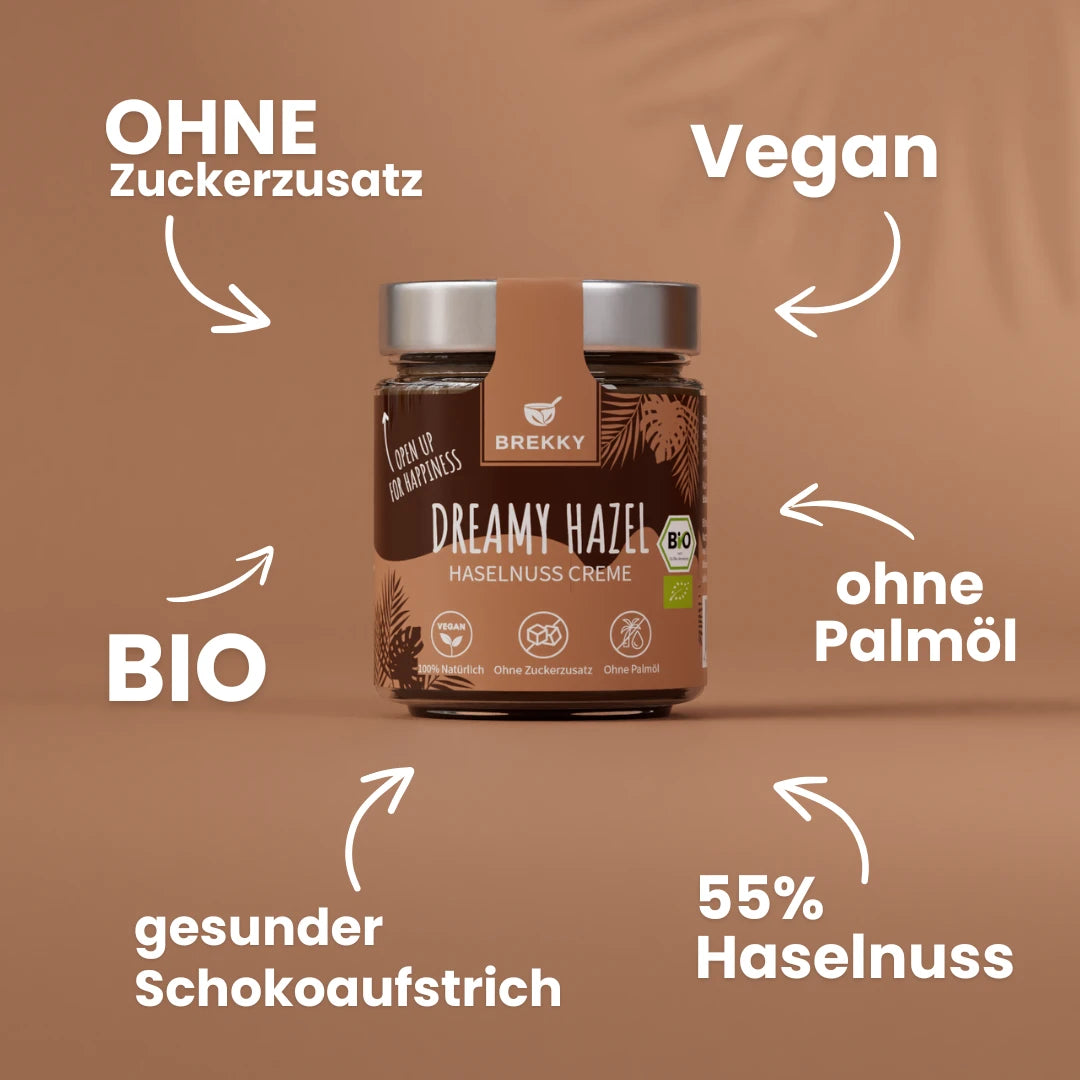
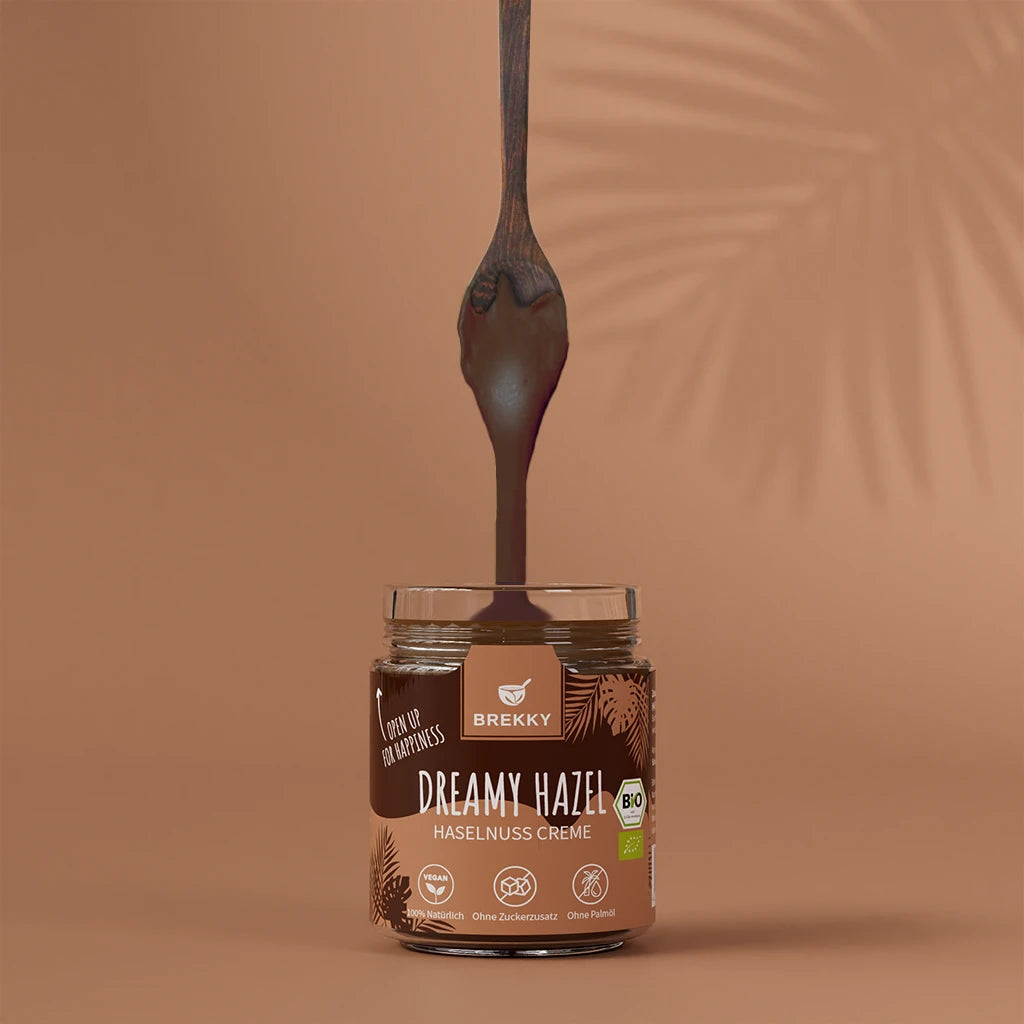
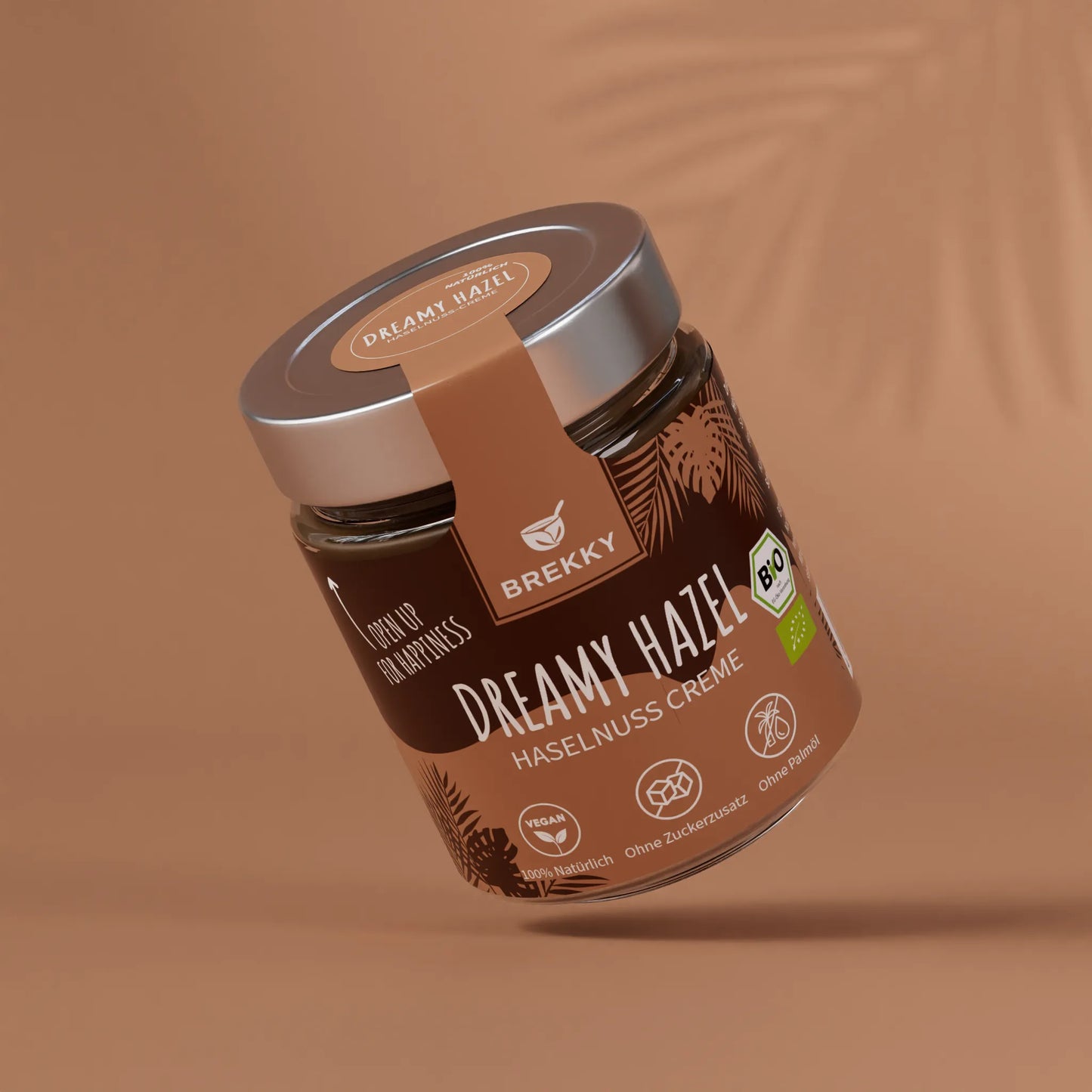
Healthy & Quick Breakfast Ideas
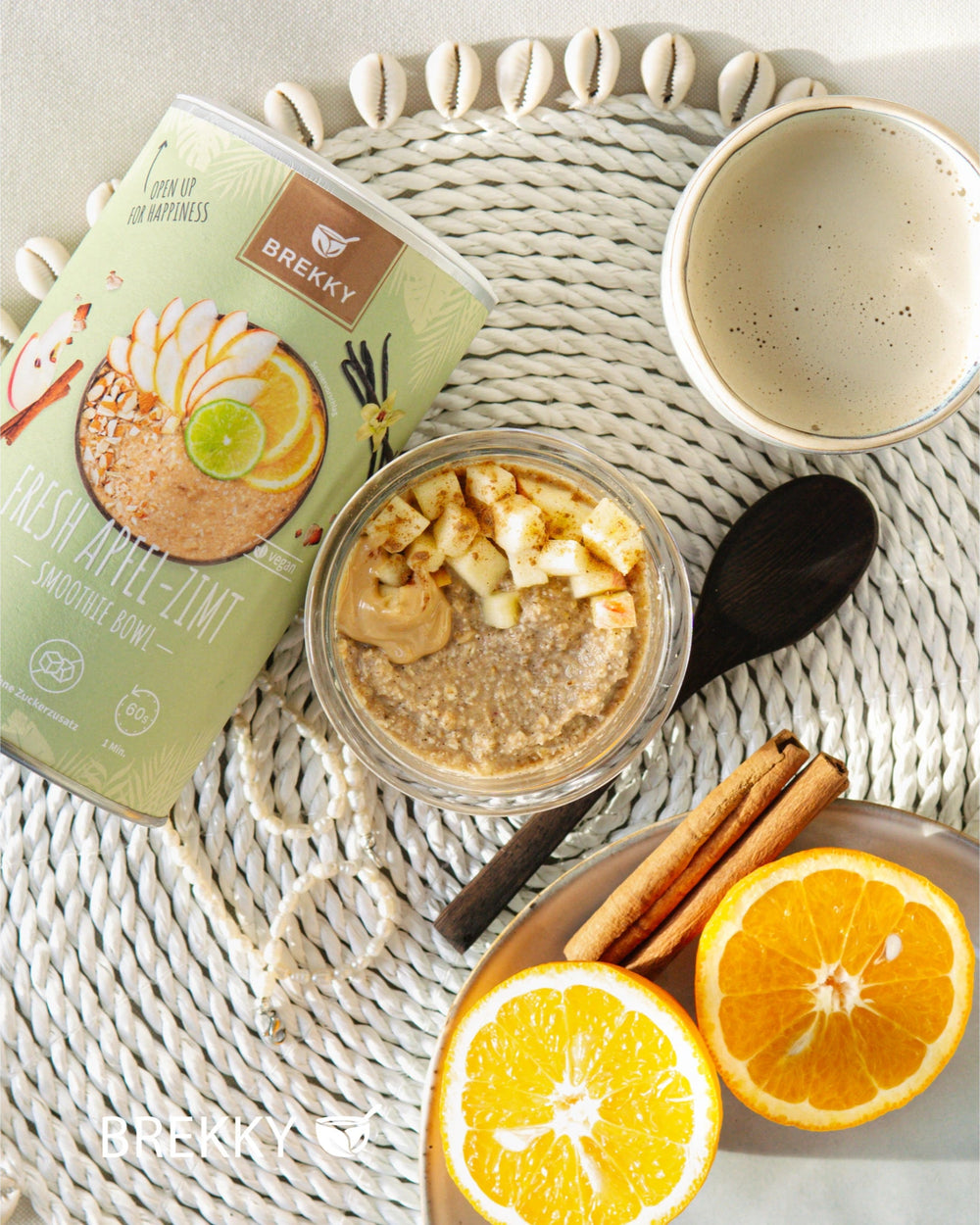
Ideas for a healthy breakfast
- Porridge : Oat flakes, water, or (plant-based) milk can be used to create a creamy porridge in just a few minutes. Topped with fresh fruit, nuts, flaxseed, or chia, it provides an extra dose of fiber and protein.
- Whole-grain bread with spread : Whether hummus, peanut butter, quark, or tomato paste—there are many healthy spreads rich in vitamins and minerals. Those who prefer a spicier flavor can add herbs or spices.
- Smoothie Bowl : A smoothie bowl is a thick, spoonable smoothie. The base might be pureed fruit (e.g., banana, berries) with a bit of oatmeal or flaxseed. For a crunchy bite, sprinkle on muesli, nuts, or coconut flakes.
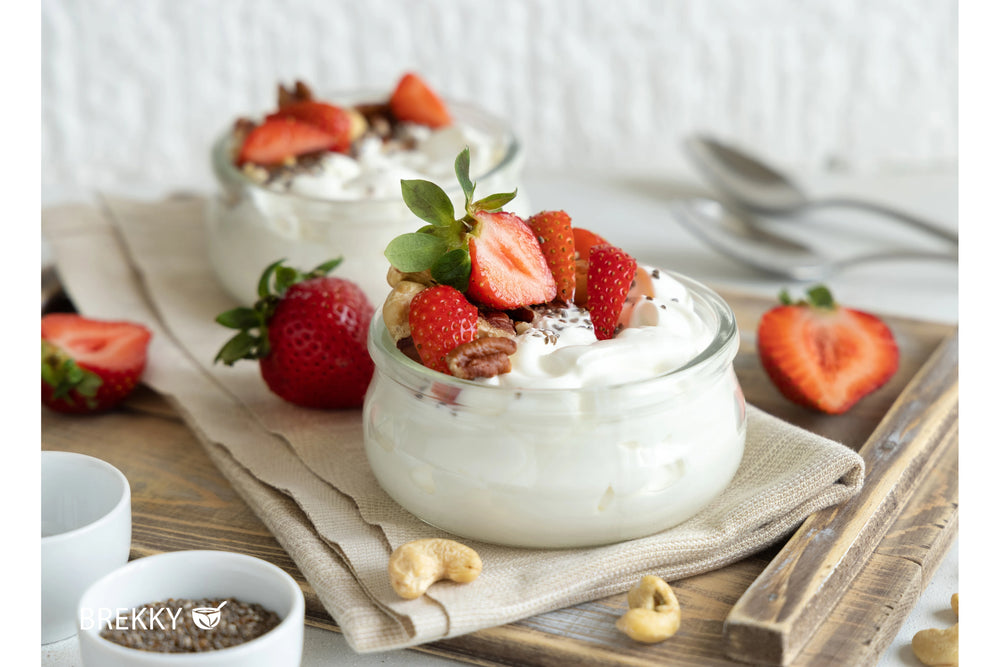
Ideas for a quick breakfast
- Overnight Oats : As mentioned above, oat flakes are mixed with liquid and left to swell overnight in the refrigerator. In the morning, you can eat them straight from the spoon or take them with you.
- Avocado toast : A quick piece of toast or whole wheat bread topped with mashed avocado and a squeeze of lemon, salt and pepper – breakfast is ready.
- Fruit Quark : Combine natural quark, low-fat quark, or a plant-based quark alternative, add sliced fruit, and perhaps a little honey or fruit puree. The whole thing is ready in just a few minutes.
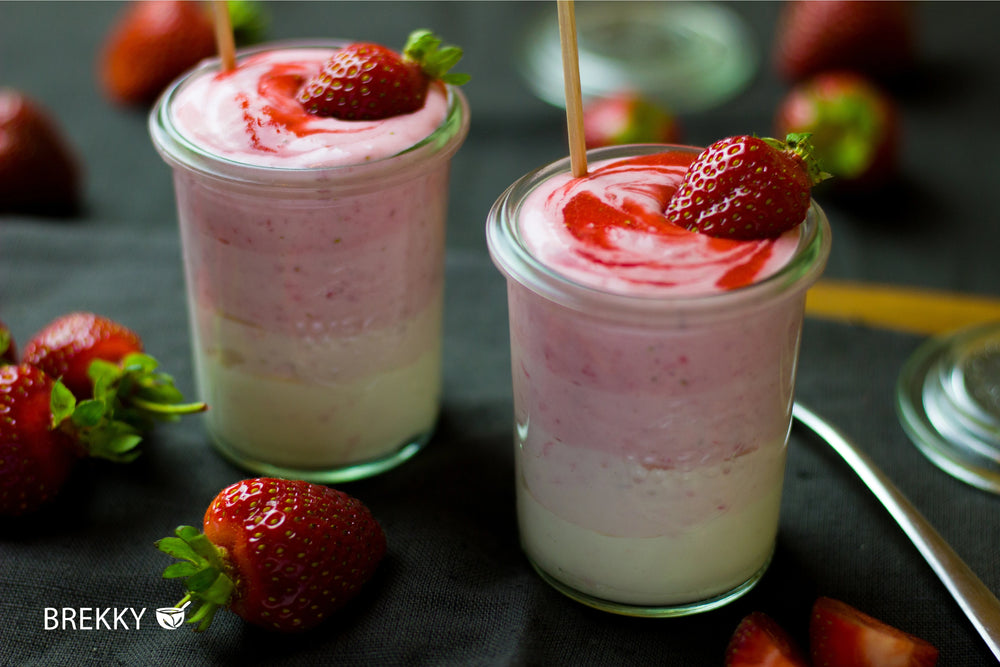
Save time through preparation
- Plan your shopping list : Having basic foods like oatmeal, whole-grain bread, fruit and vegetables in stock saves time every day.
- Keep utensils handy : A tidy kitchen where bowls, knives and ingredients are easy to find reduces stress.
- Use to-go containers : If you're really in a hurry, sealable containers and thermal cups help you transport breakfast safely to the office or school.
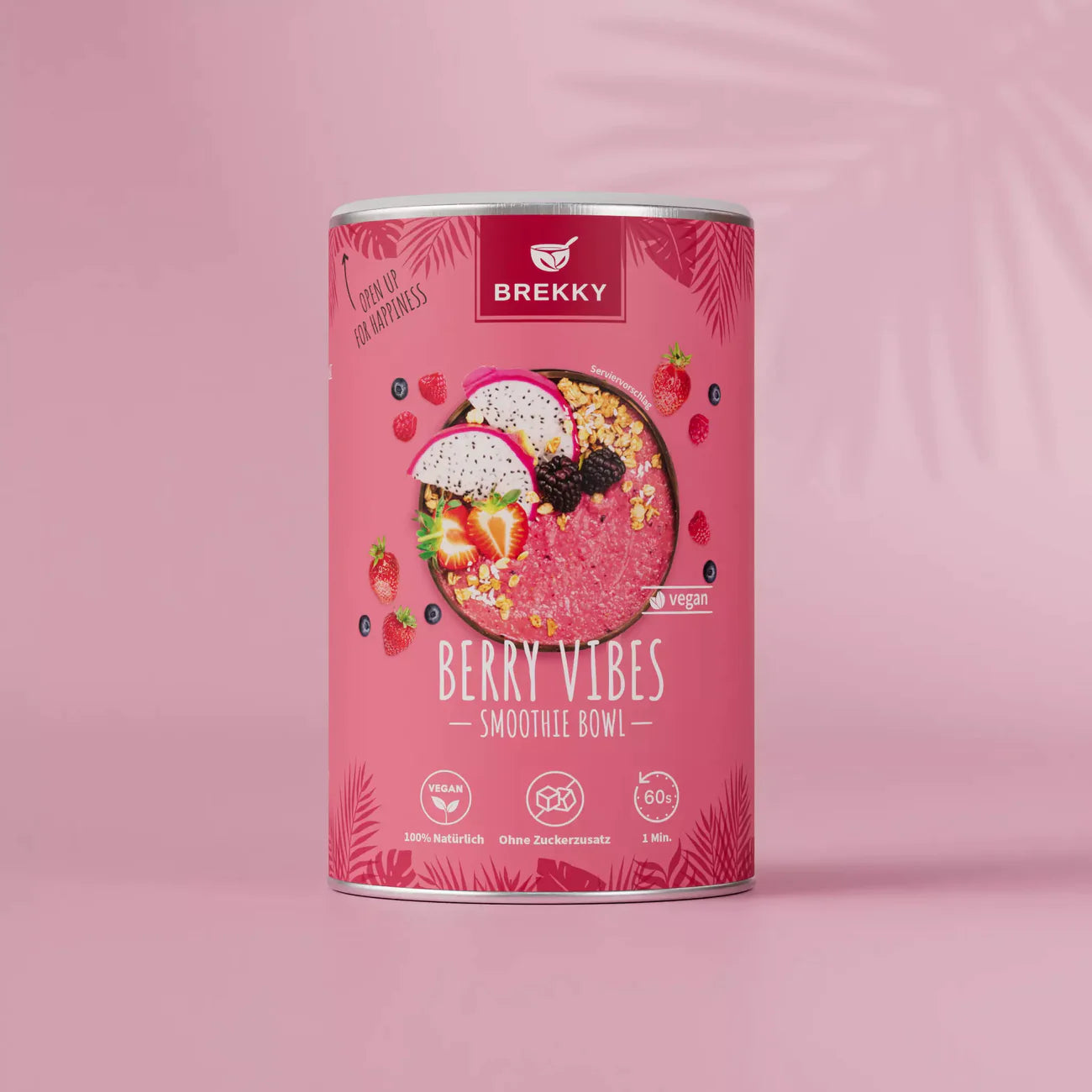
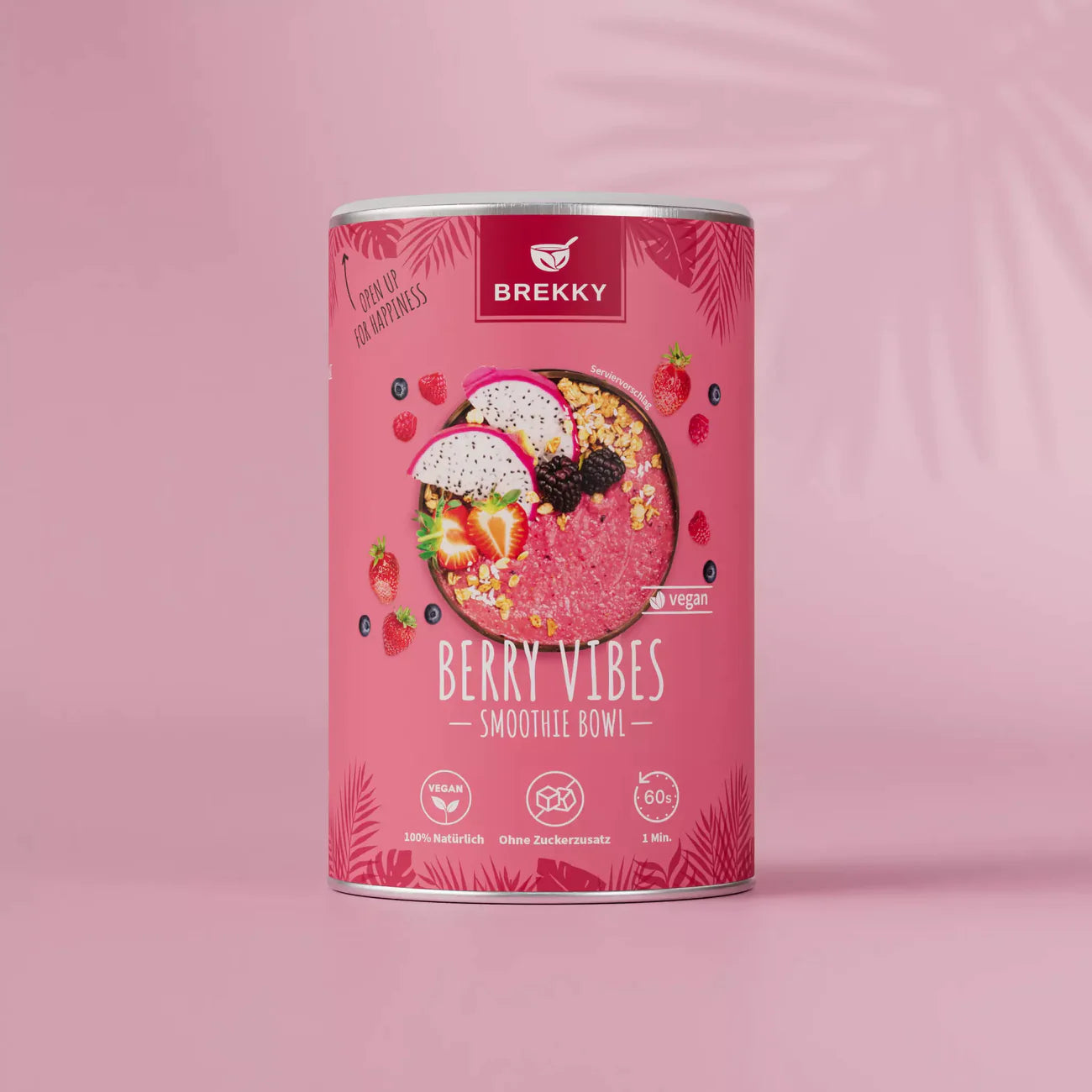

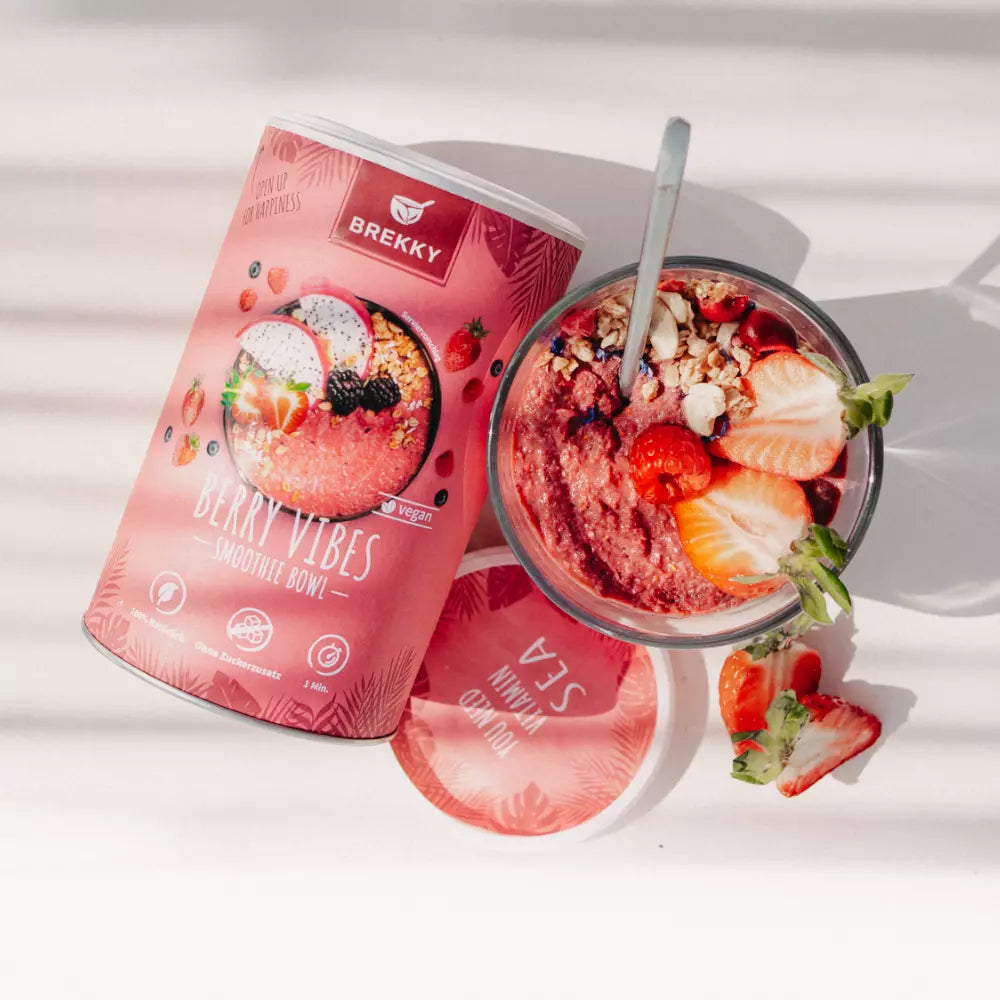


Vegan breakfast ideas
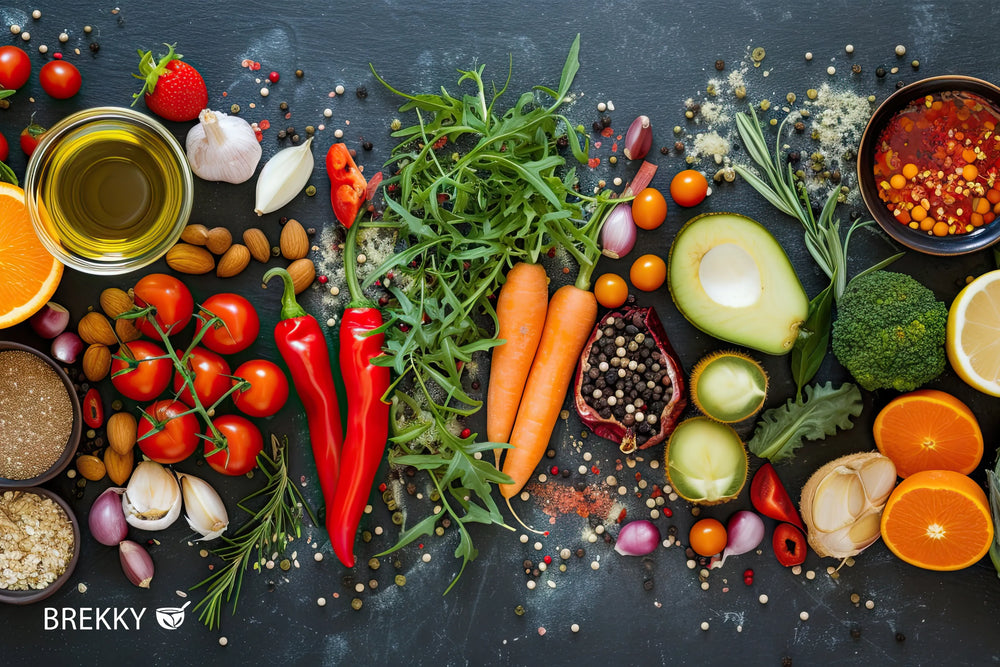
The natural enemy of black vine weevils and grubs
Important nutrients in a vegan diet
- Proteins : Legumes (lentils, beans, chickpeas), tofu, tempeh, seitan and nuts are good sources of protein.
- Vitamin B12 : Vitamin B12 is rarely found in a purely plant-based diet. Therefore, supplementation or fortified foods are often recommended.
- Iron : Plant-based iron from whole grains, legumes, and green leafy vegetables is also important. Foods rich in vitamin C (e.g., bell peppers, citrus fruits) improve iron absorption.









Tips & Checklist
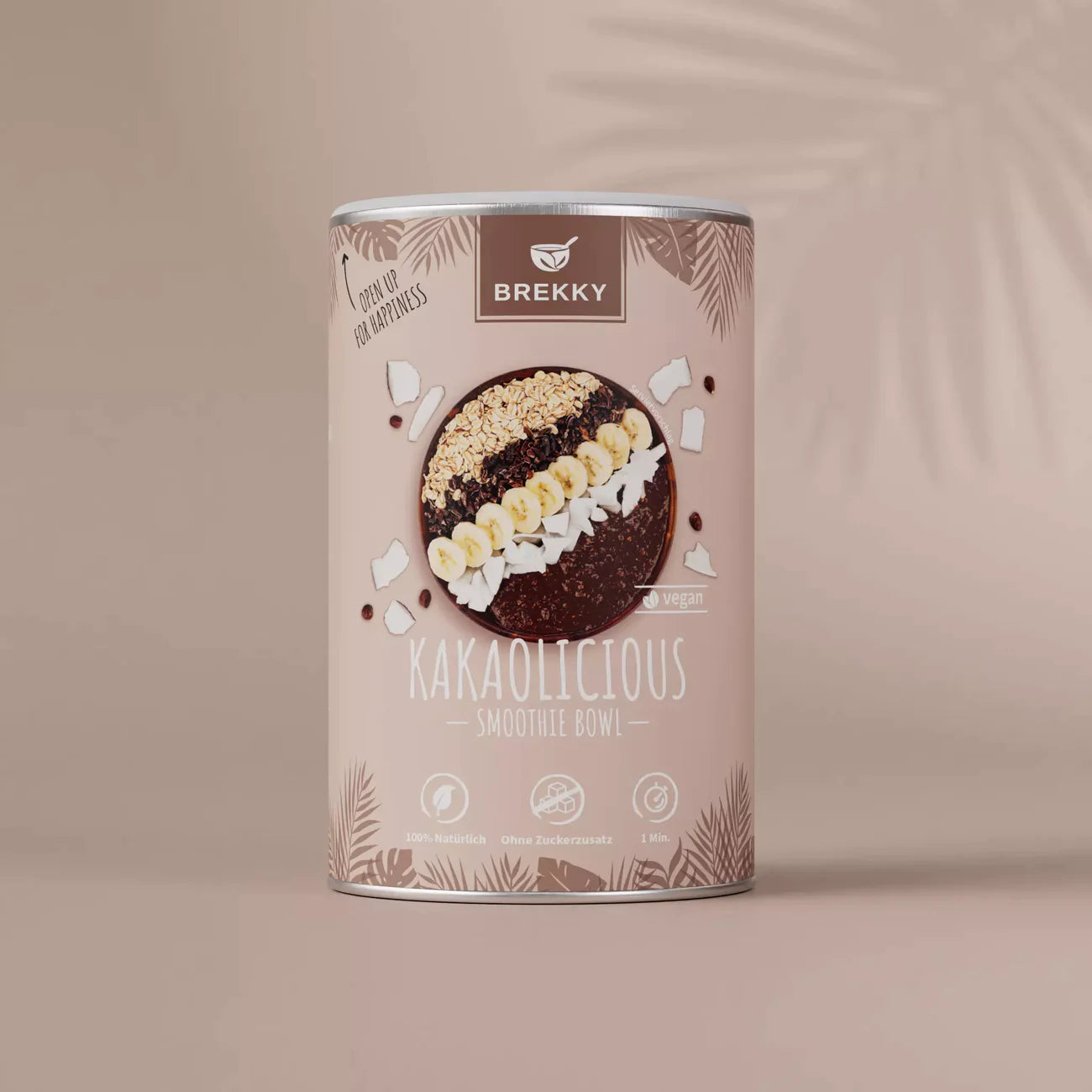
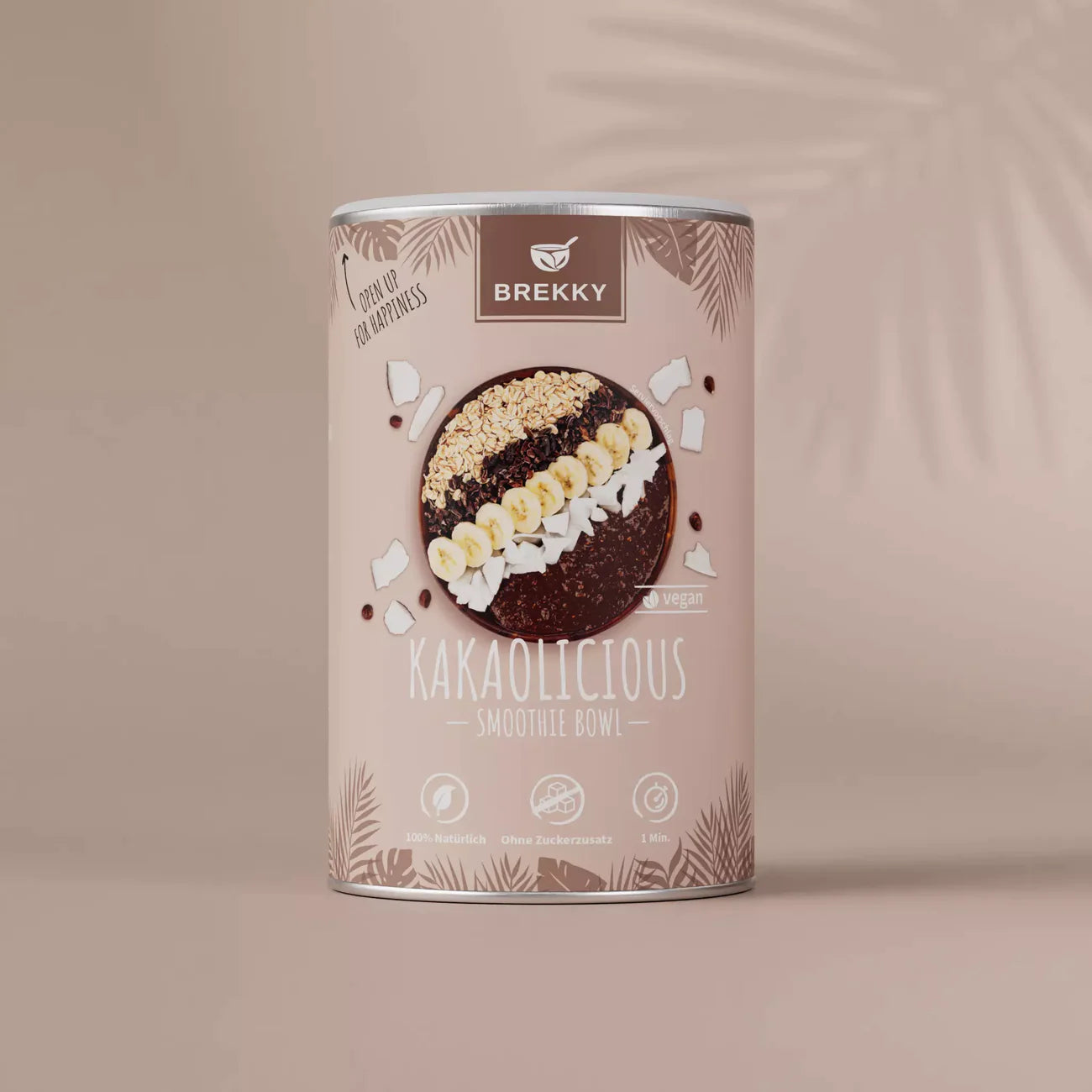
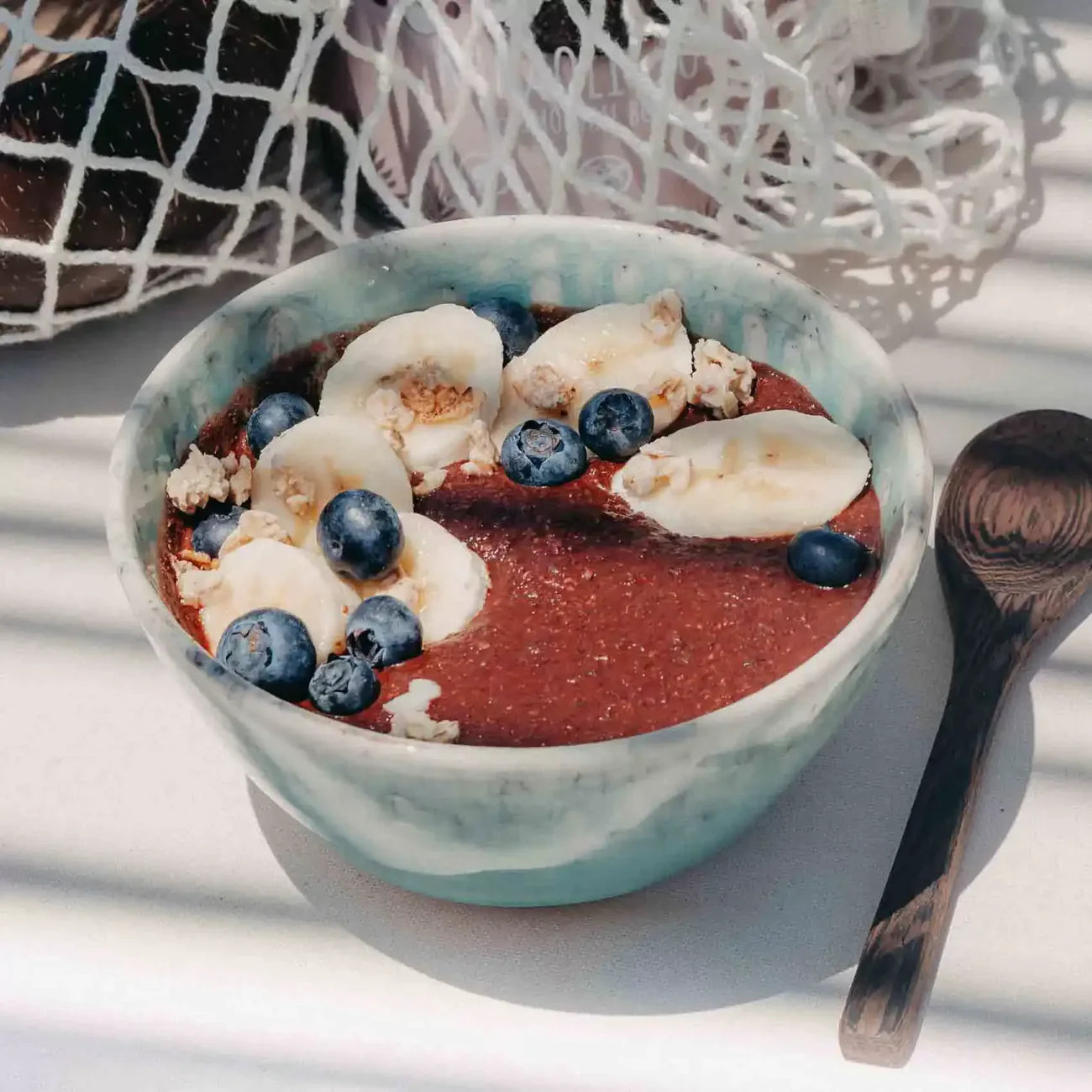



Conclusion





